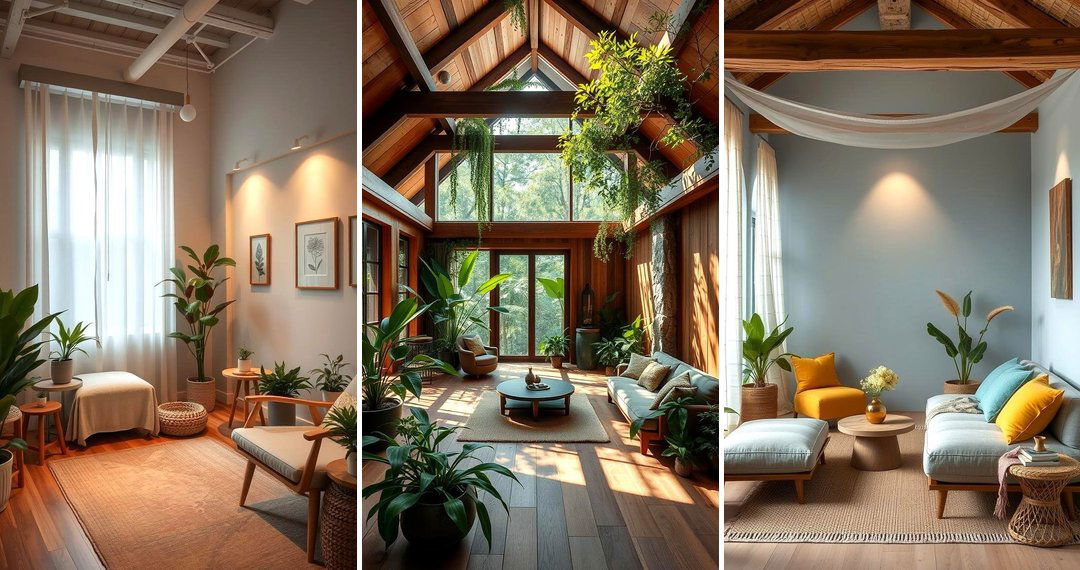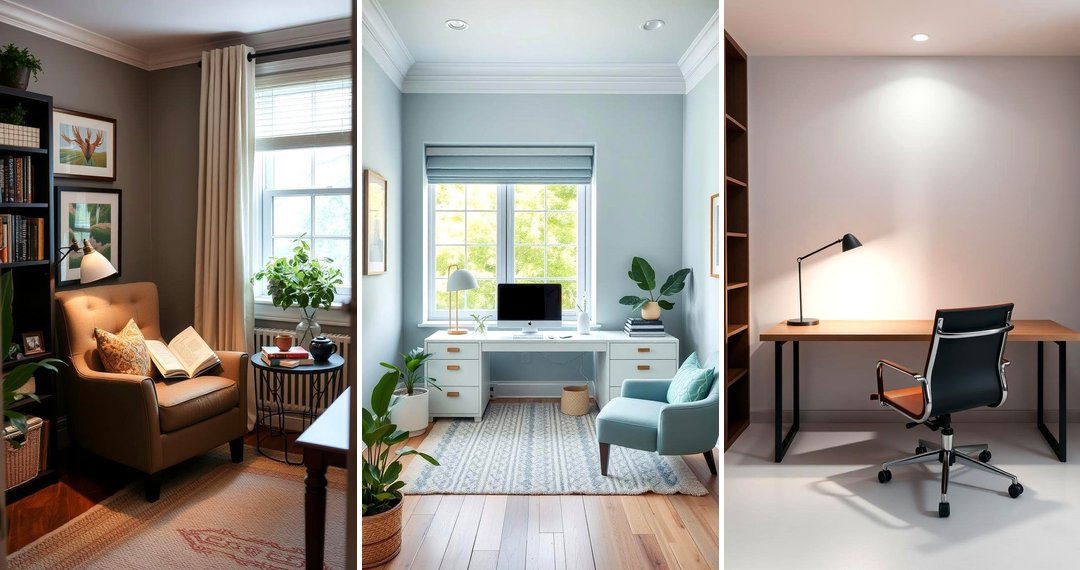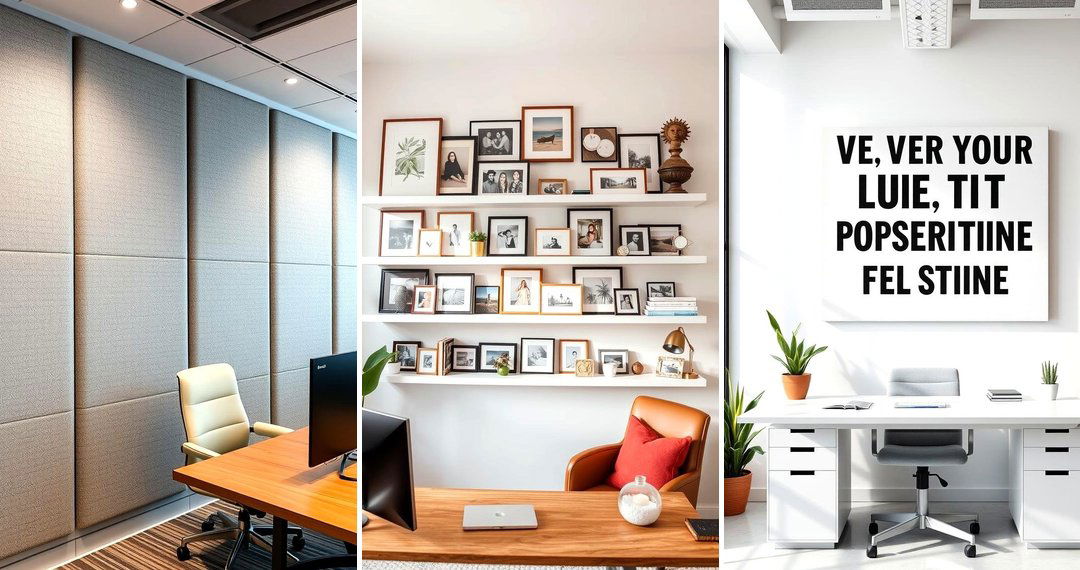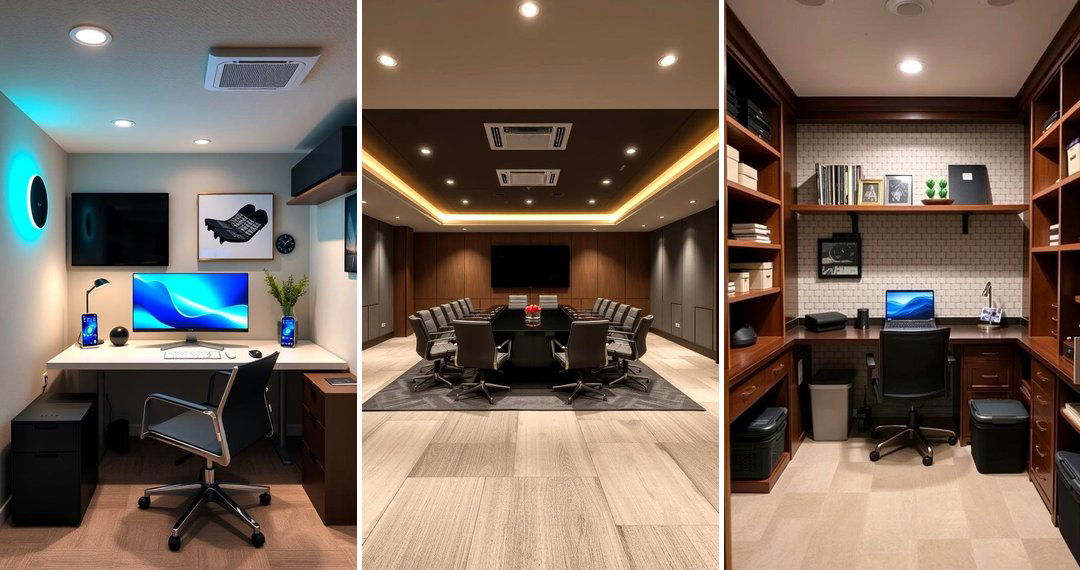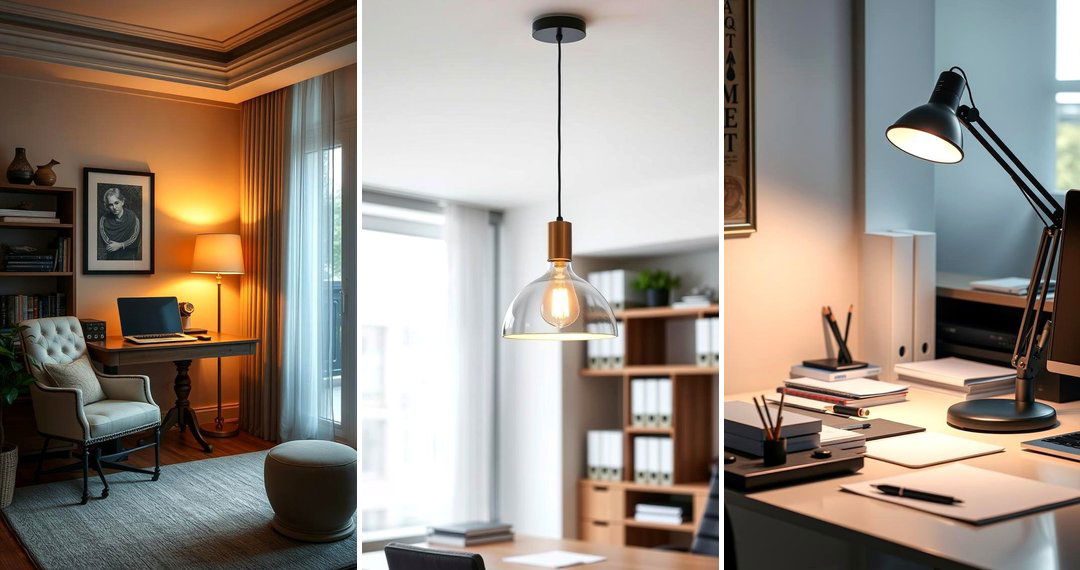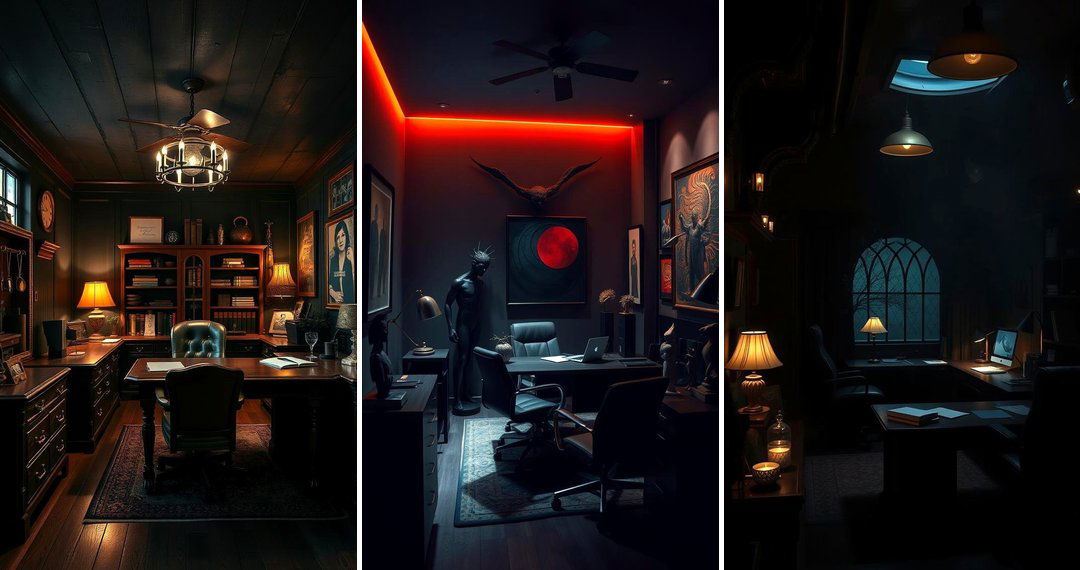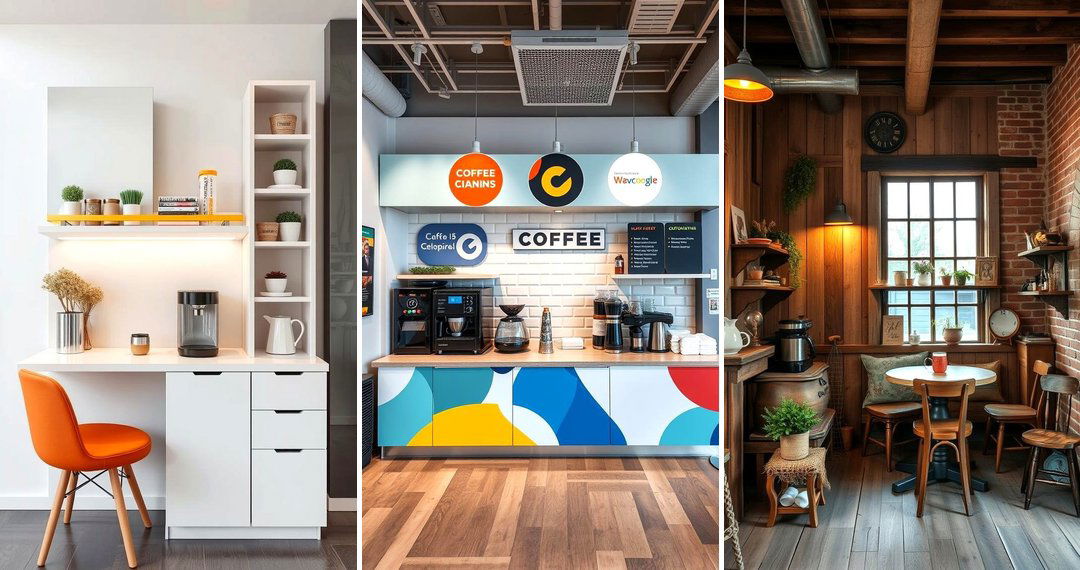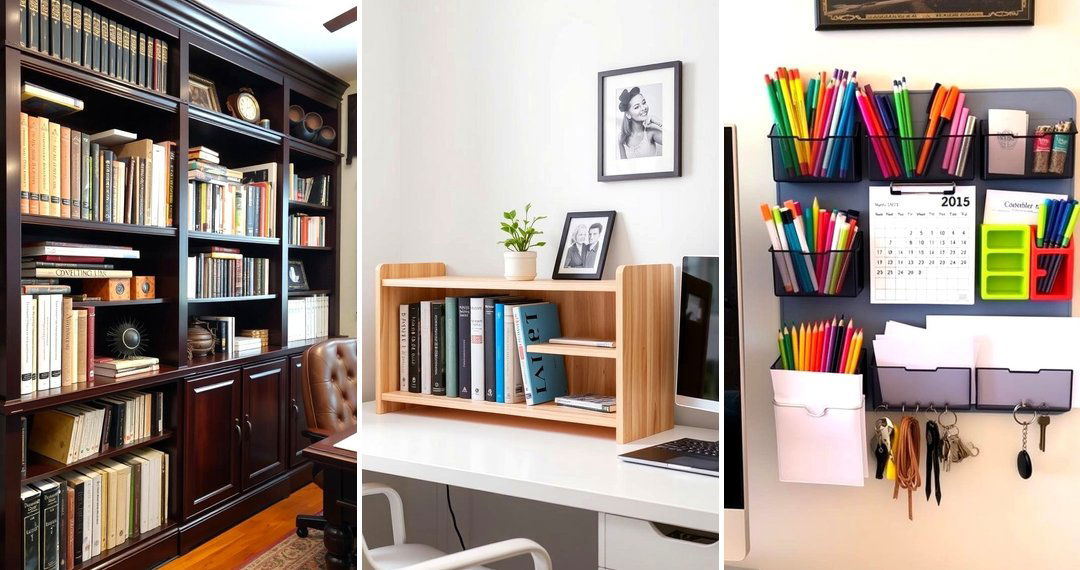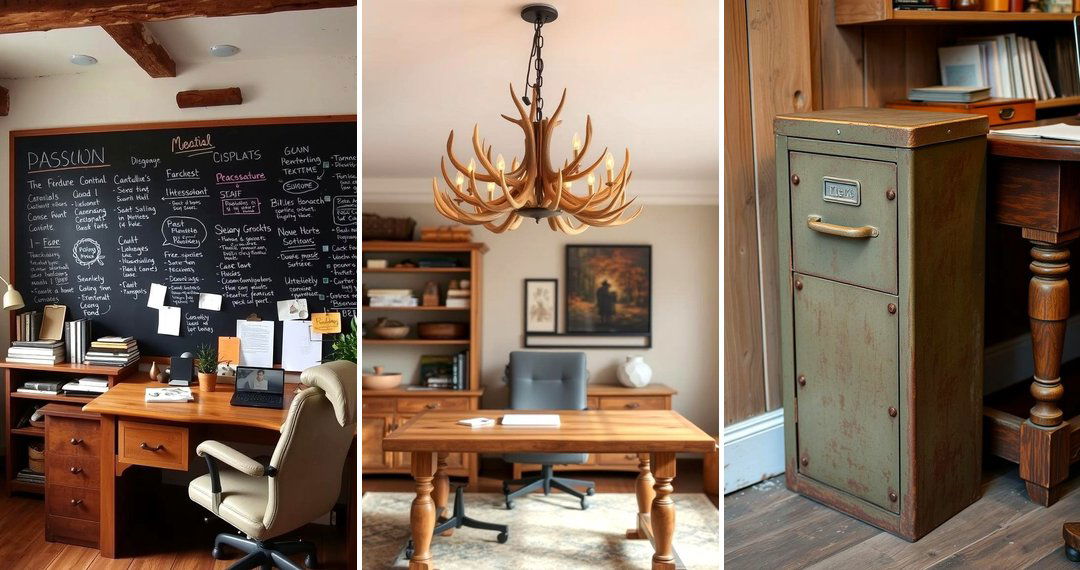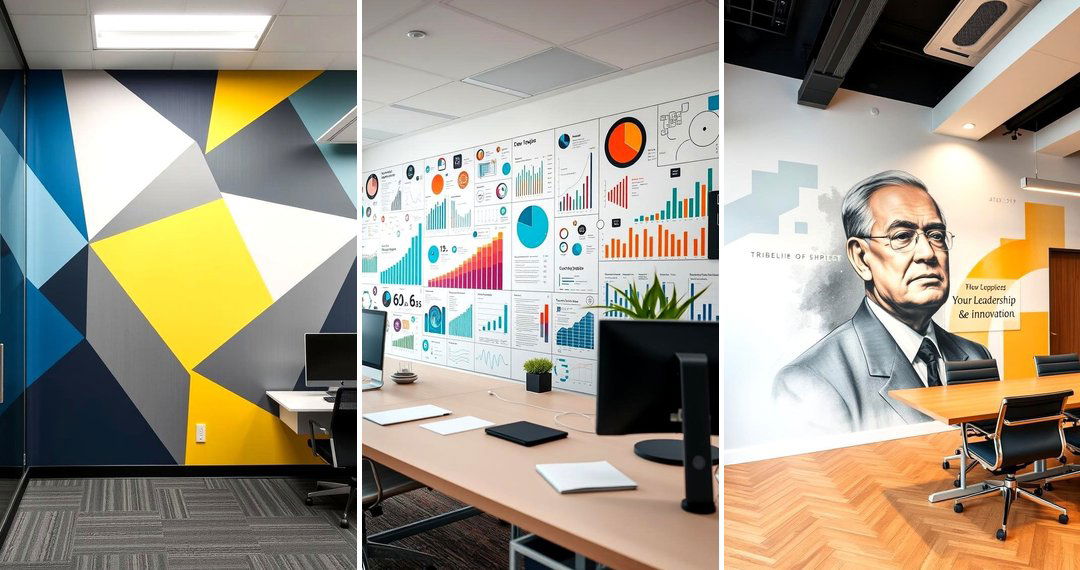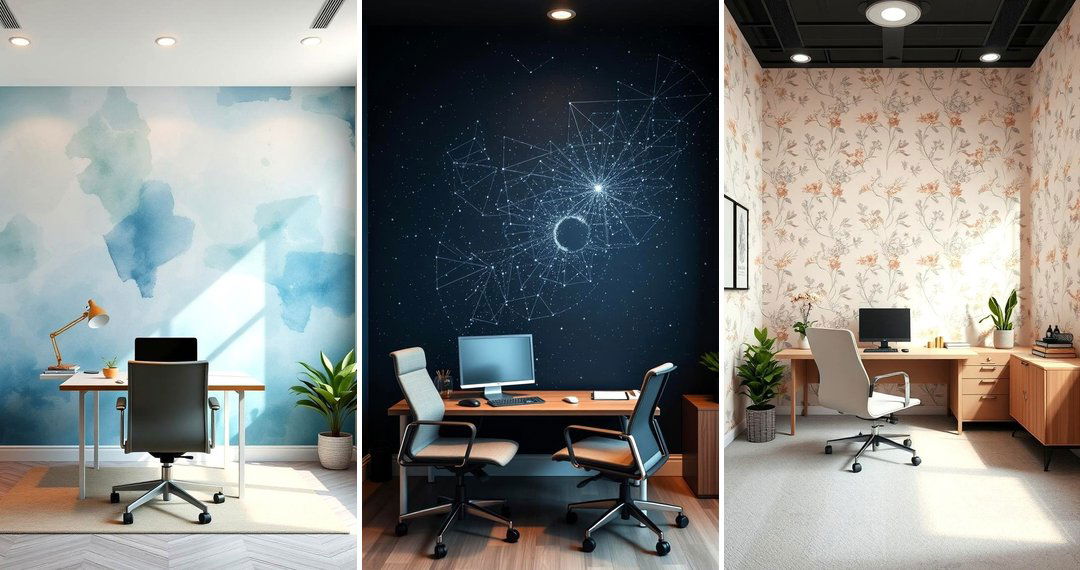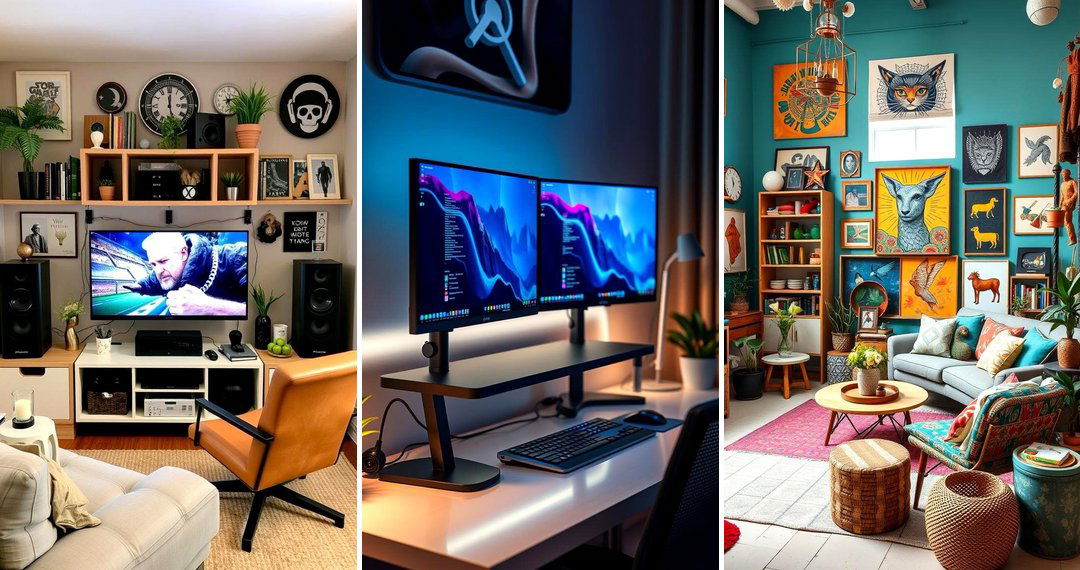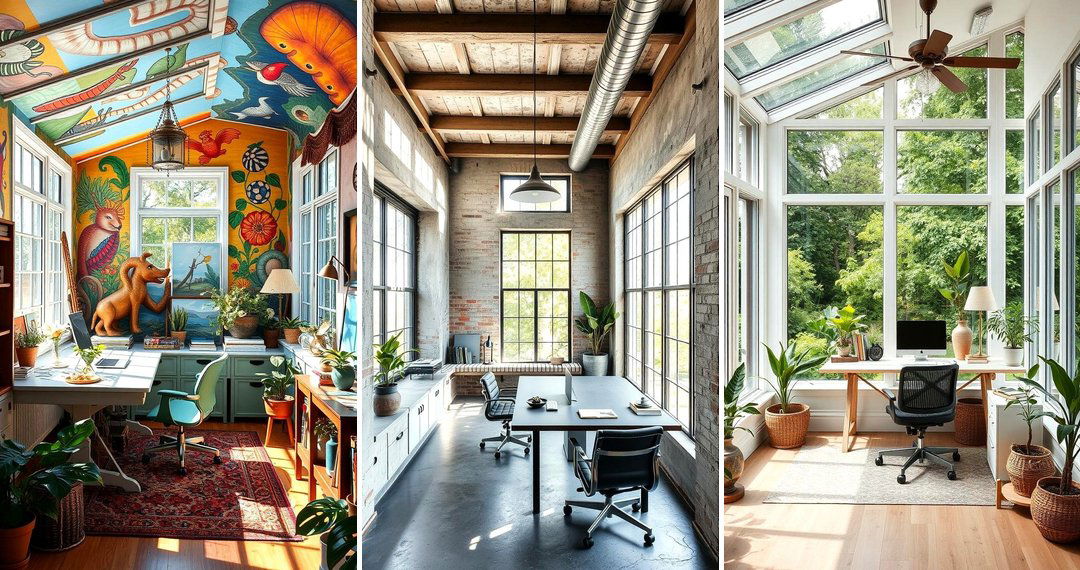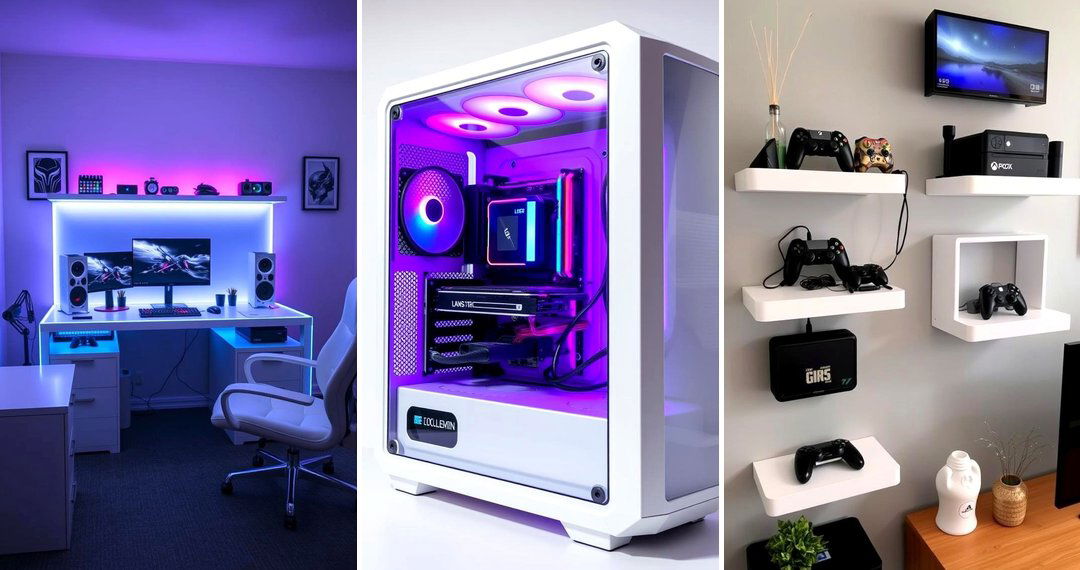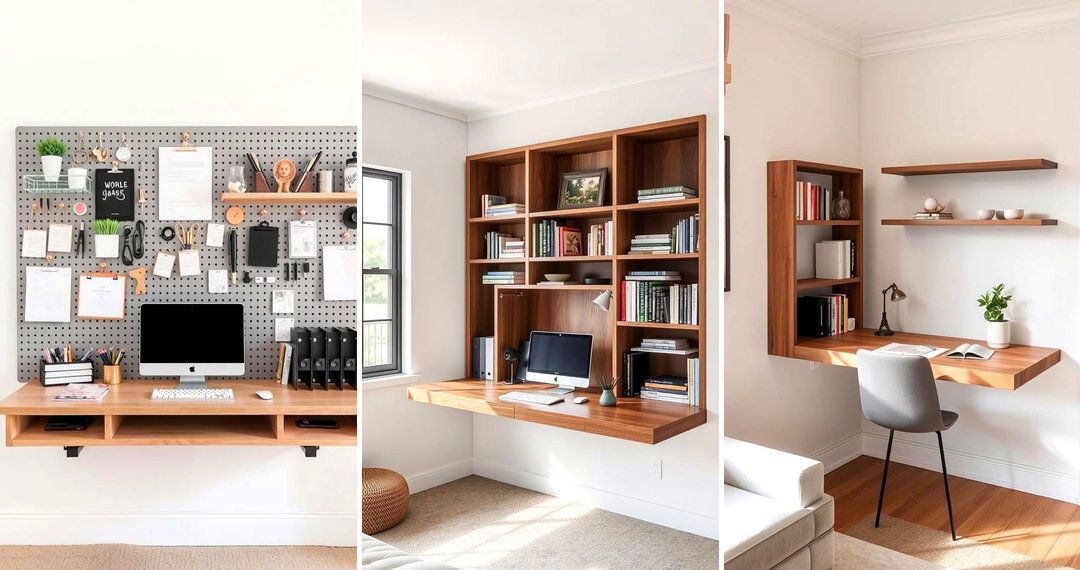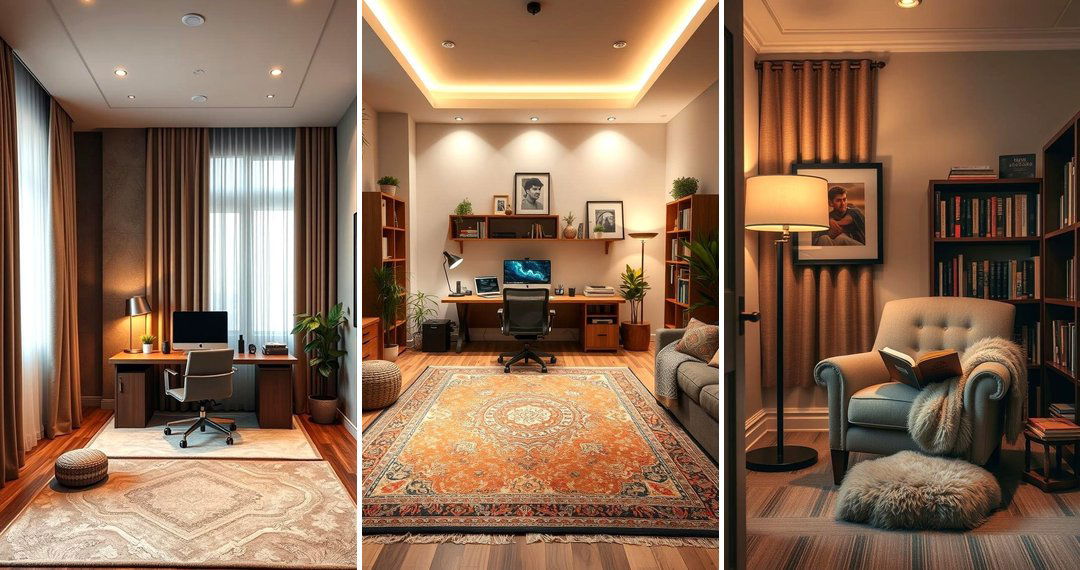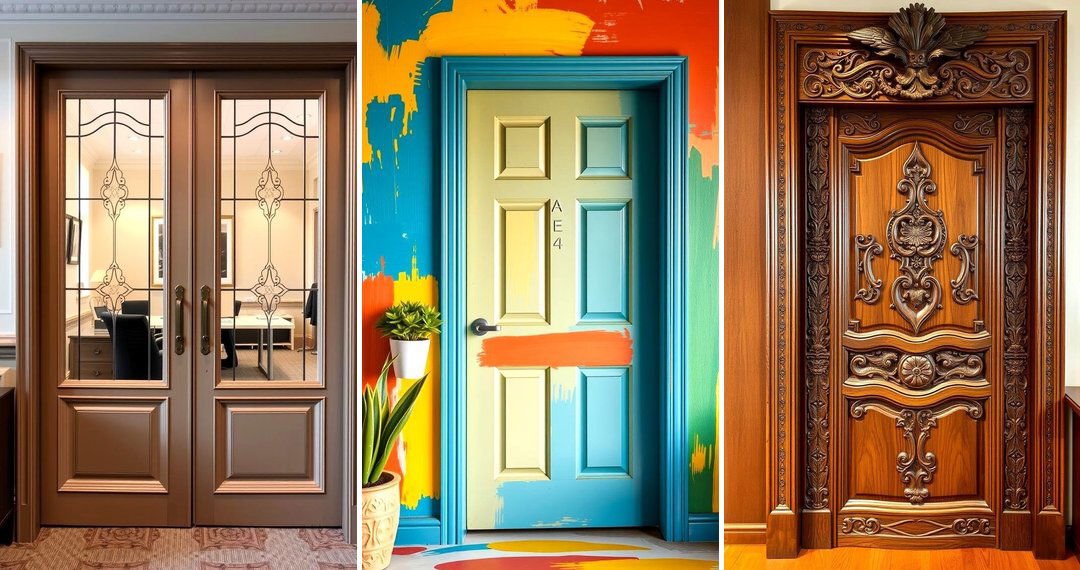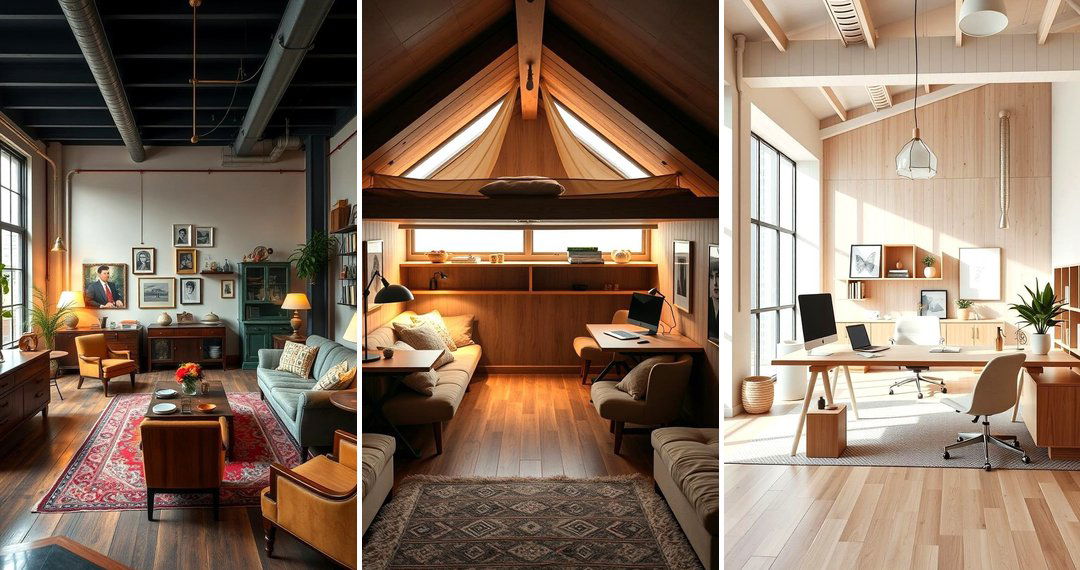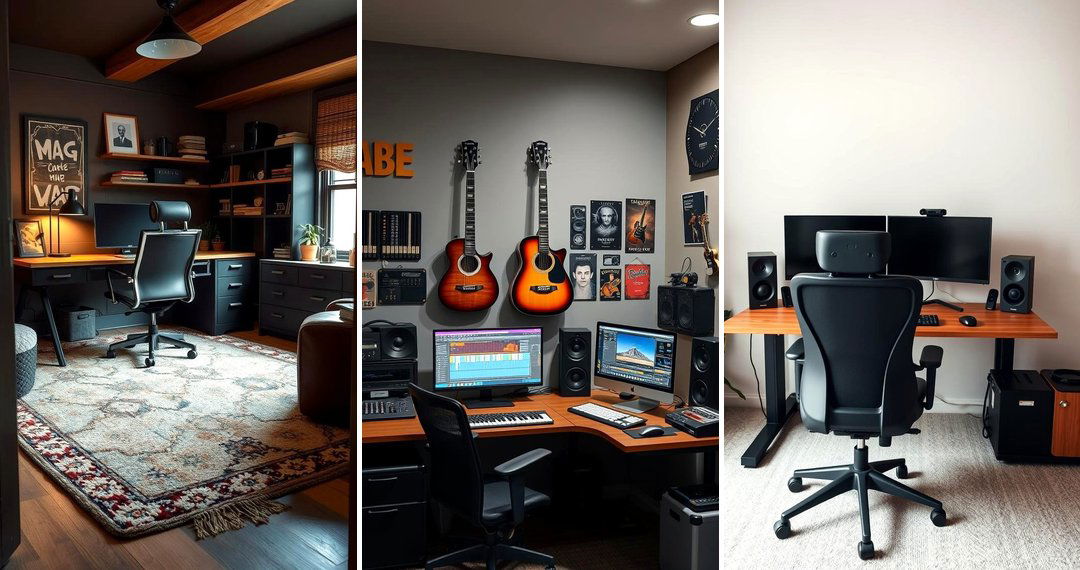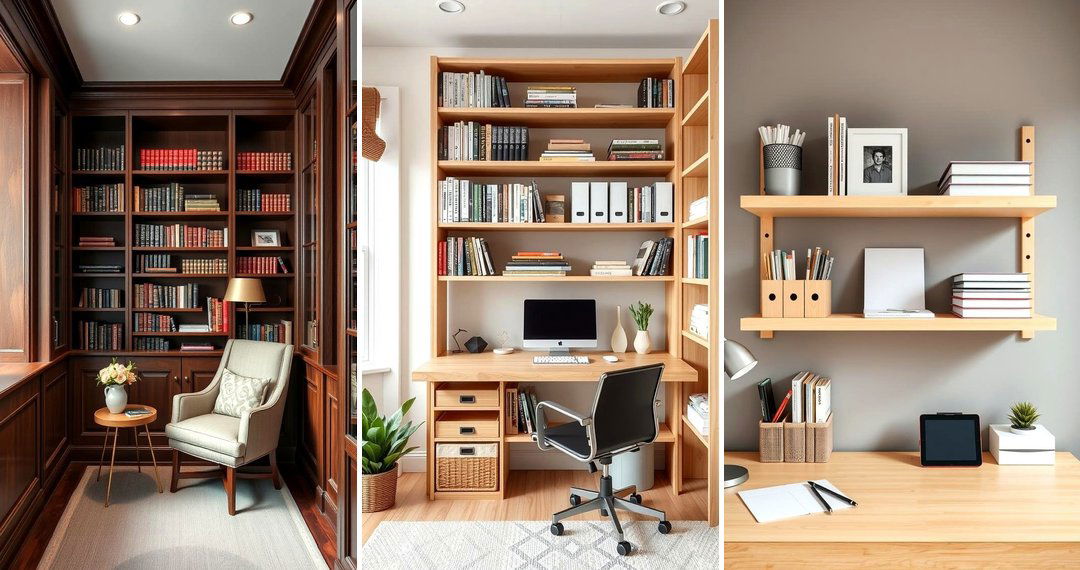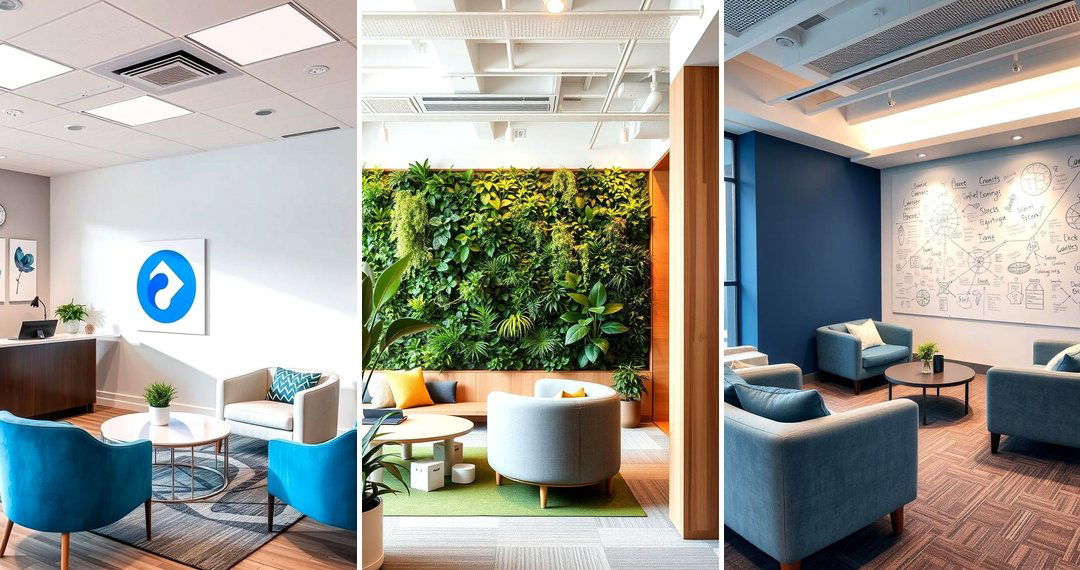A thriving therapy space begins with a well-thought-out environment that nurtures both clients and therapists. By merging functionality with soothing aesthetics, these decor ideas create a sanctuary where healing and growth occur. Each suggestion reflects a balance of modern design and timeless calm, providing practical benefits alongside an inviting atmosphere. Discover these transformative approaches that enhance comfort, foster trust, and promote a sense of serenity in every corner of your office. Embark on a journey through the 24 Therapist Office Decor Ideas and elevate your workspace.
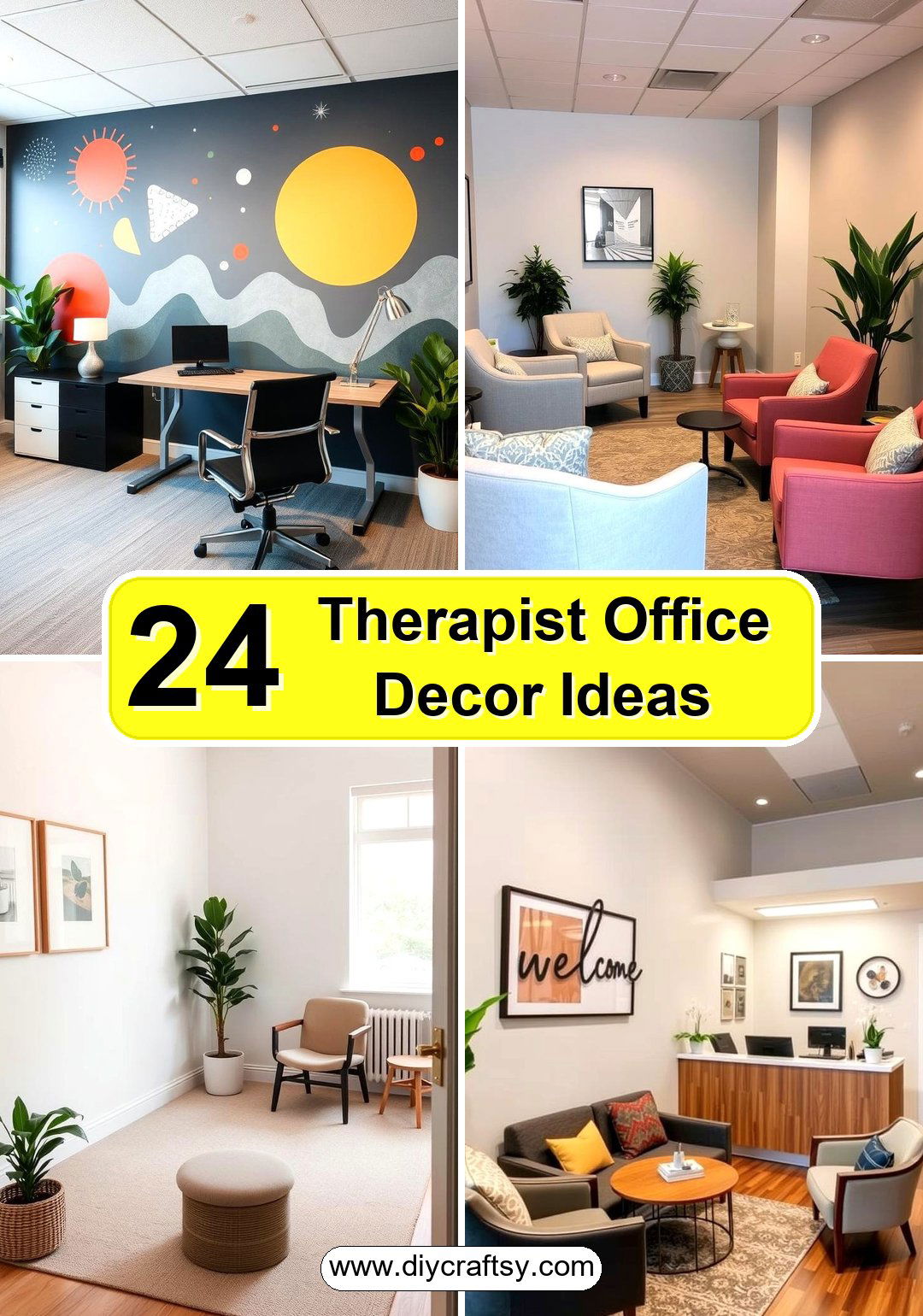
1. Soothing Color Palette

A soothing spectrum of gentle hues transforms a therapy office into a sanctuary of calm. Soft blues, muted greens, and delicate neutrals work together to create an atmosphere that lowers stress and inspires tranquility. This approach not only enhances visual appeal but also encourages relaxation and open conversation. The carefully selected palette serves as a foundation for further decor, ensuring every element feels harmoniously connected. By integrating these calming tones, you foster an inviting space where clients feel safe and supported throughout their healing journey.
2. Comfortable Seating Arrangement
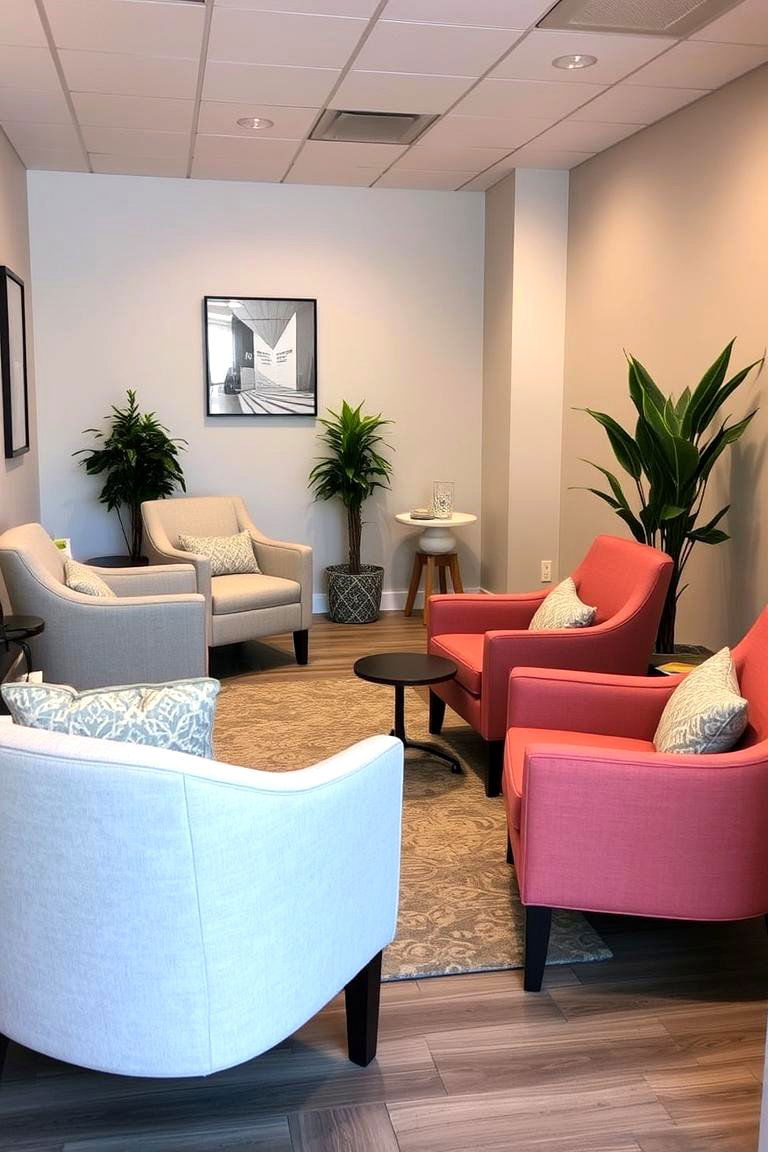
Consider a comfortable seating arrangement that invites relaxation and meaningful dialogue. Plush armchairs, ergonomic couches, and supportive chairs create a welcoming ambiance where clients can feel at ease. This setup encourages open communication while offering physical comfort during sessions. Thoughtful placement and varied seating options accommodate individual needs, ensuring both therapist and client can focus on the therapeutic process. A well-arranged seating area is key to transforming your office into a nurturing haven that promotes calm, understanding, and emotional well-being.
3. Nature-Inspired Elements
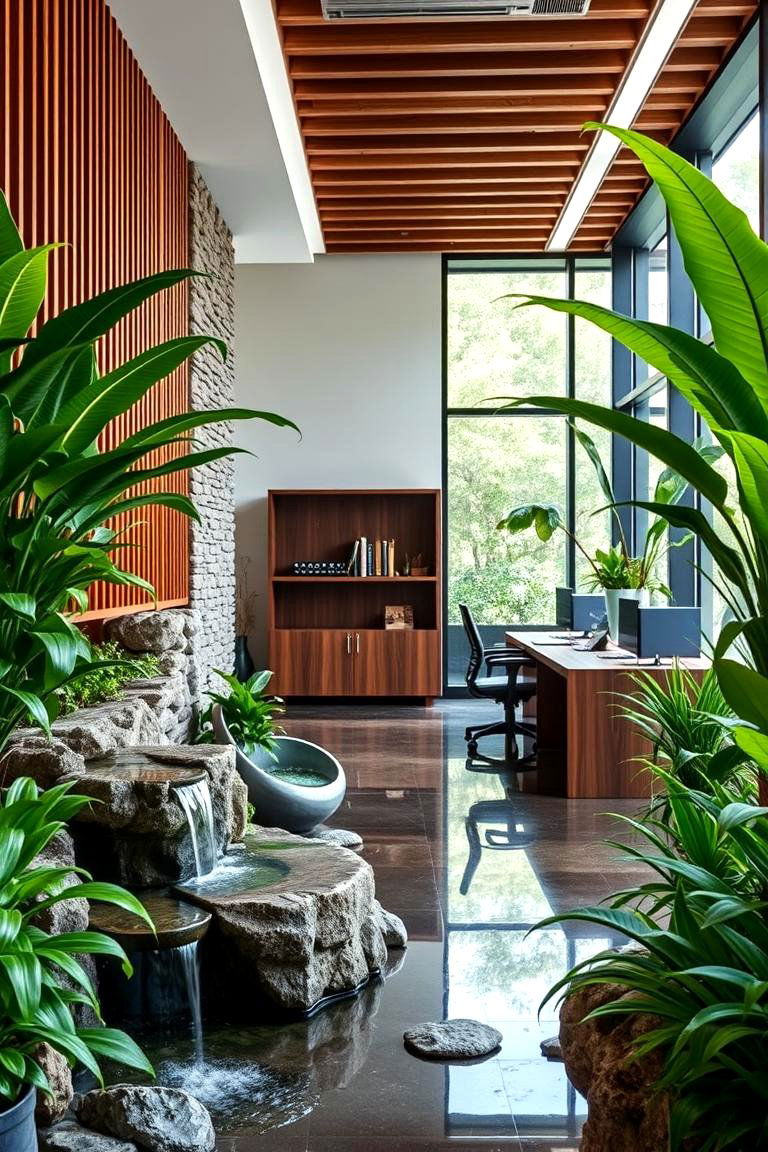
Looking to integrate the calming influence of nature, consider incorporating organic elements into your office decor. Natural wood accents, stone details, and even subtle indoor water features evoke a sense of connection with the outdoors. These components not only bring freshness but also inspire a tranquil atmosphere that supports mental clarity. The use of natural textures and plant life can reduce stress and create an environment that feels both vibrant and grounding. This thoughtful integration invites nature’s restorative energy into your therapeutic space.
4. Inspirational Artwork
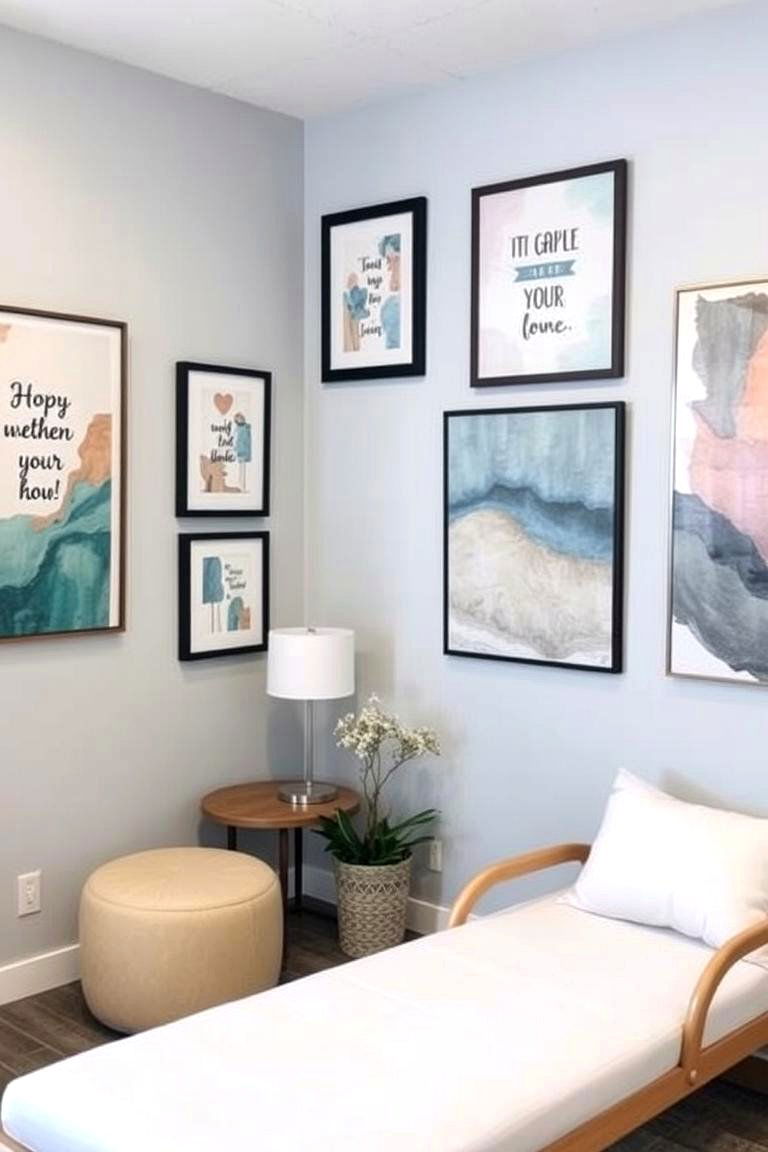
What inspirational artwork can do is spark hope and stimulate reflective thought in a therapy setting. Carefully chosen art pieces, such as abstract prints or serene landscapes, can serve as visual affirmations of growth and healing. These artworks not only enhance the decor but also offer daily encouragement, inviting clients to explore new perspectives. The art becomes a silent conversation partner, subtly reinforcing positive messages and fostering a supportive environment. This creative infusion helps transform the office into a space where art and therapy converge harmoniously.
5. Minimalist Design
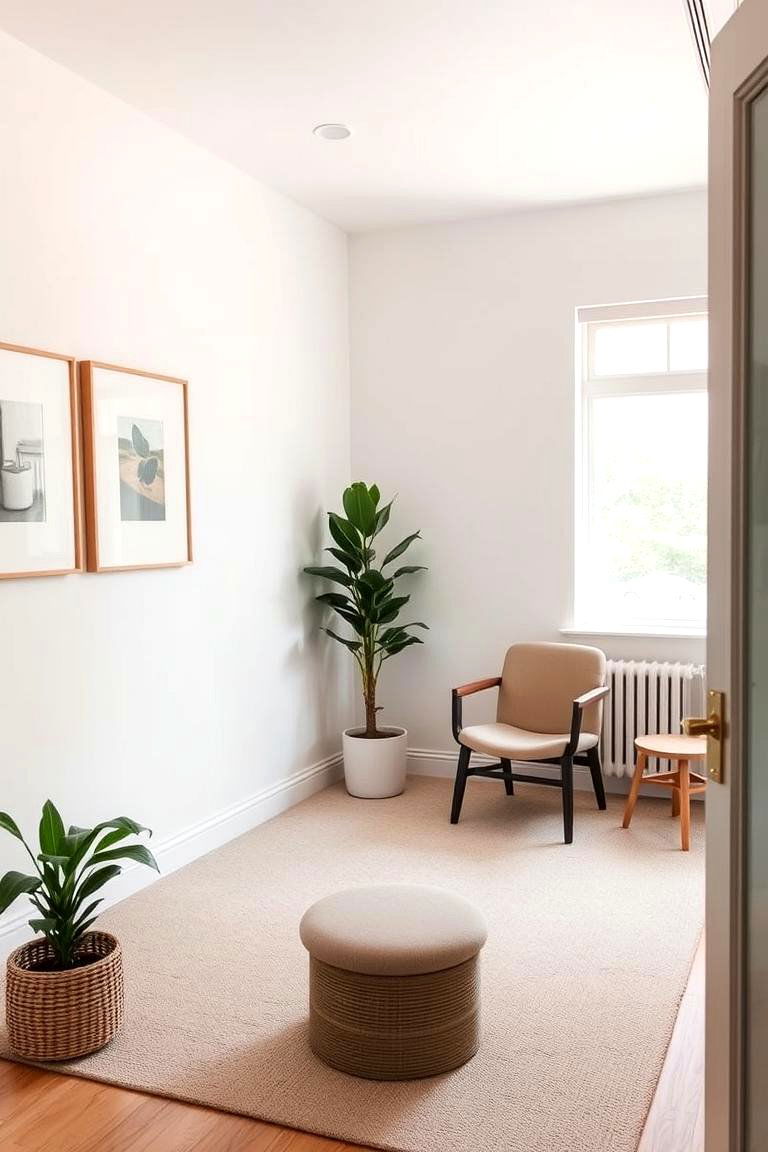
This minimalist design approach declutters your office, allowing both mind and space to breathe freely. Clean lines, open spaces, and a selective use of decor create a focused environment where distractions are minimized. By stripping away the unnecessary, you emphasize what truly matters—empathy, dialogue, and healing. The simplicity inherent in minimalism also reduces visual noise, making the space more inviting and less overwhelming. Embracing a minimalist aesthetic helps you build a tranquil atmosphere that encourages clients to engage more deeply in the therapeutic process.
6. Ergonomic Furniture
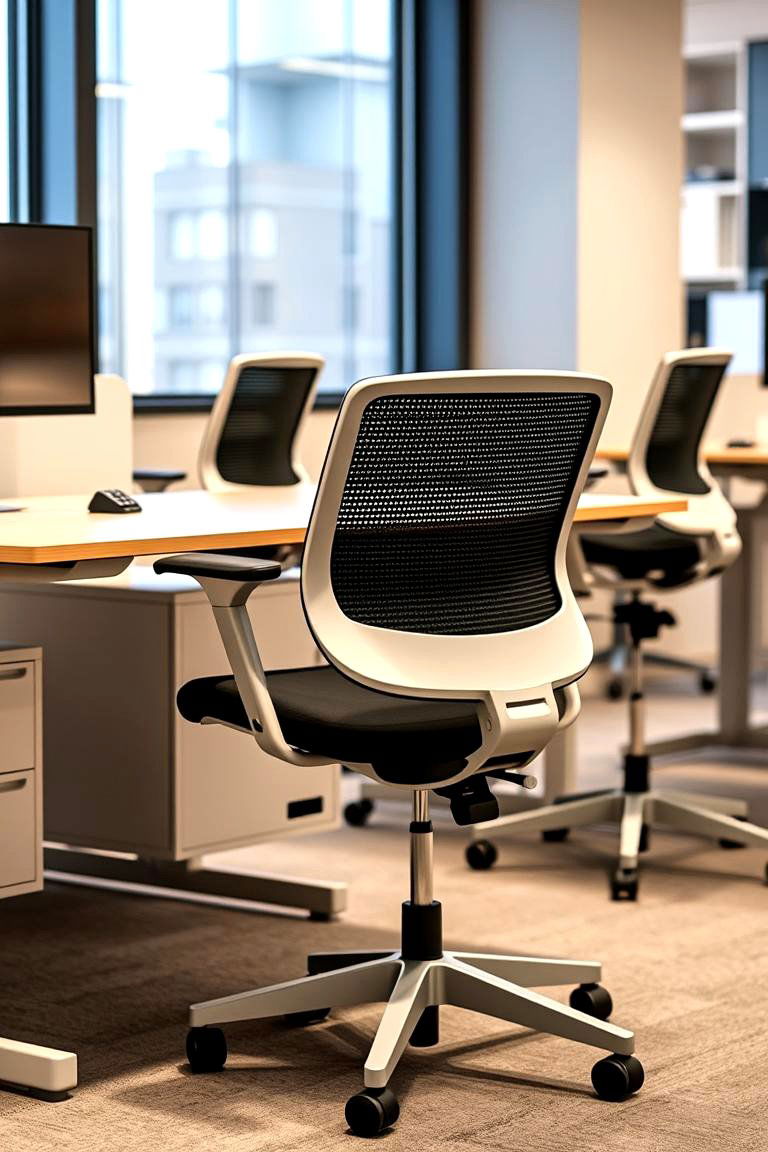
For ergonomic furniture, choose pieces that support both comfort and posture during sessions. Ergonomic chairs and adjustable desks ensure that the physical environment aligns with the body’s needs, reducing strain and promoting long-term wellness. This thoughtful investment not only benefits the therapist but also sets a standard of care for clients, illustrating attention to every detail. With designs that blend functionality and style, ergonomic furniture reinforces a commitment to health and efficiency in a space that values both physical and emotional well-being.
7. Soft, Ambient Lighting
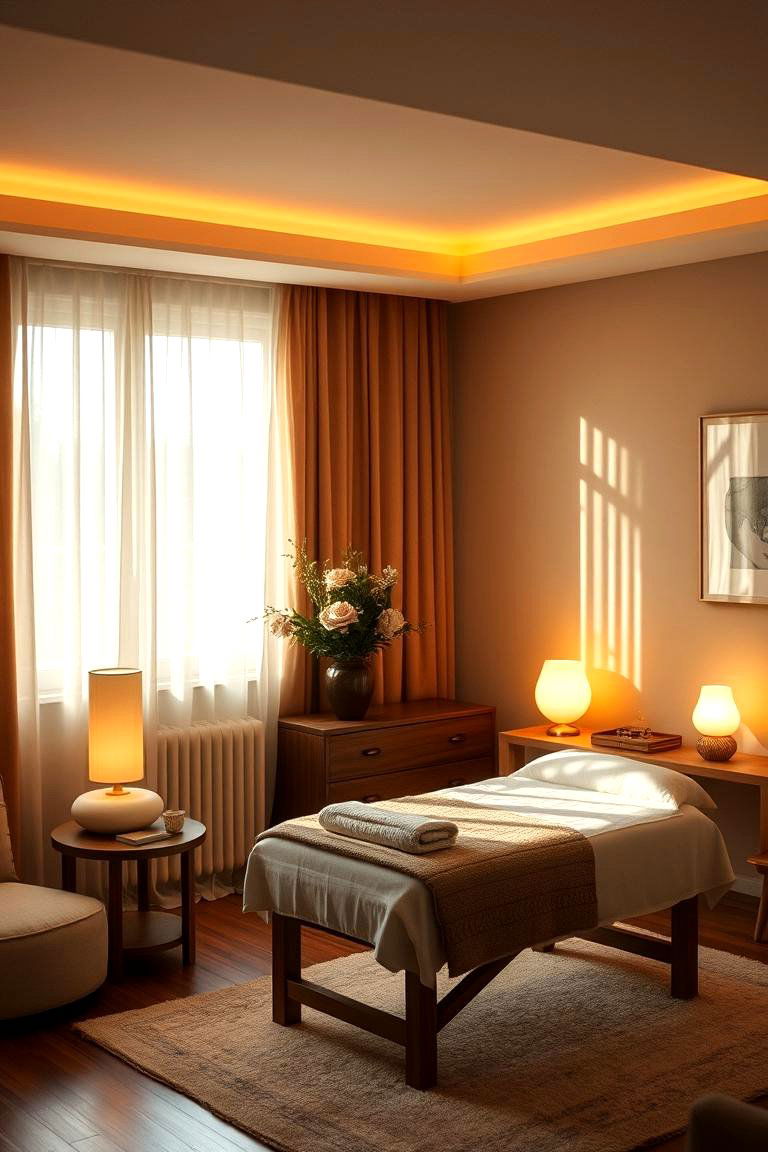
With soft, ambient lighting, you create a warm and inviting atmosphere that soothes the senses. Gentle light sources such as dimmable lamps, strategically placed LED fixtures, and natural daylight from large windows can transform the mood of your office. This careful balance of brightness and shadow offers a cozy environment that reduces harsh contrasts and supports a relaxed state of mind. By tailoring your lighting design to foster comfort, you establish a setting where every client feels at home, safe, and open to positive change.
8. Acoustic Privacy Enhancements
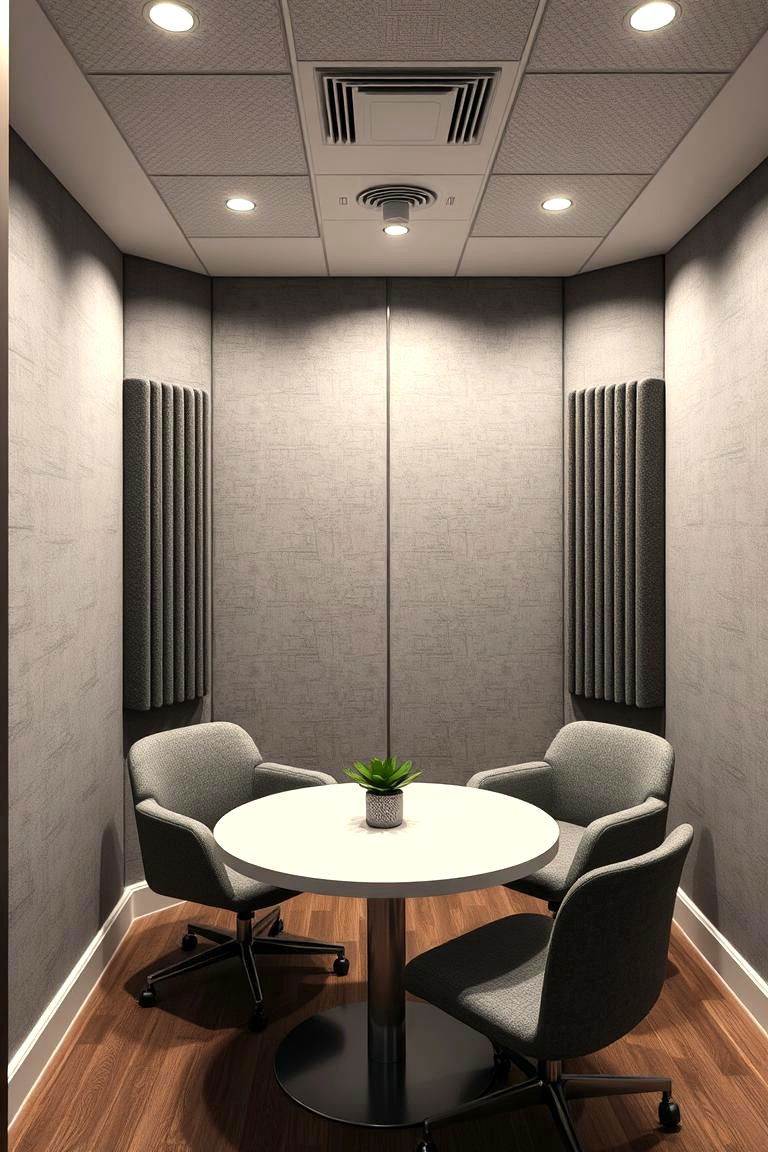
Unlike typical office spaces, acoustic privacy enhancements ensure that every conversation remains confidential and undisturbed. Installing sound-absorbing panels, heavy curtains, or specialized carpeting helps reduce ambient noise and create a secure environment. This thoughtful investment in sound control not only boosts client confidence but also improves the overall quality of sessions. By addressing acoustic challenges head-on, you cultivate a therapeutic setting where sensitive dialogues can unfold with absolute privacy and respect.
9. Indoor Plants for Serenity
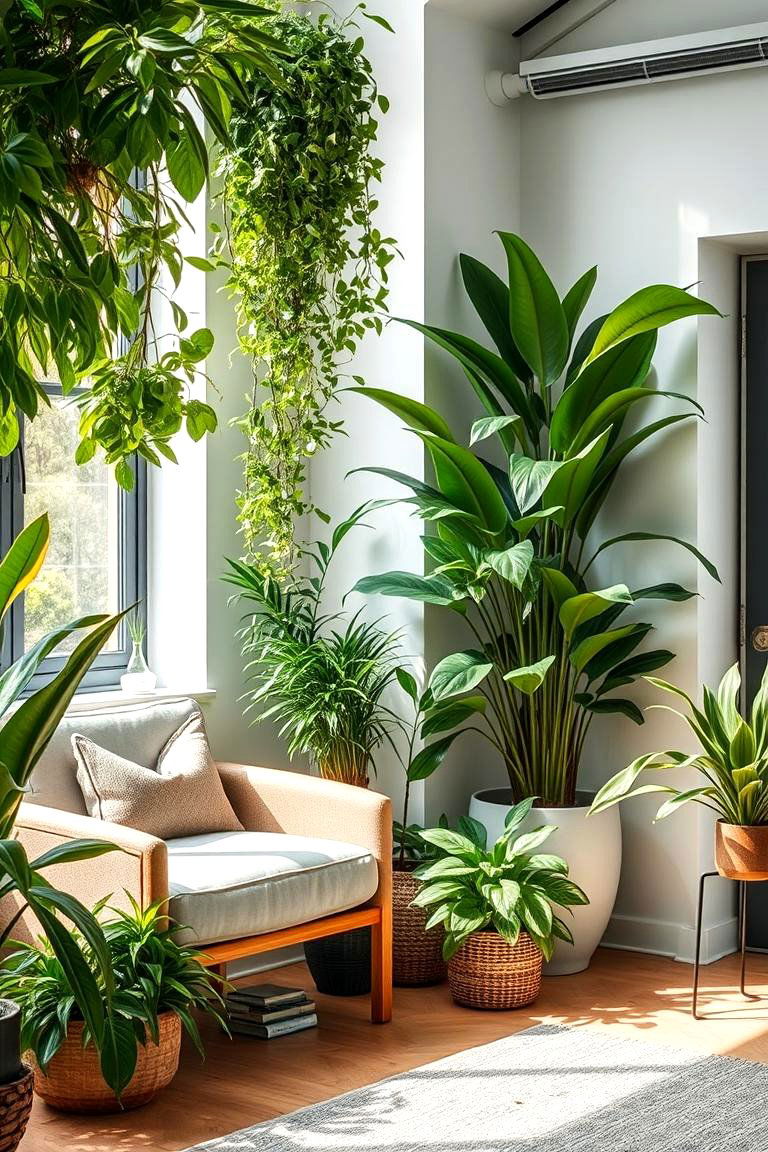
Another key element is incorporating indoor plants to infuse serenity into the space. Lush greenery not only enhances the visual appeal of your office but also improves air quality and introduces a natural rhythm to the environment. The presence of carefully chosen plants can lower stress levels, promote relaxation, and create a sense of well-being. Their organic textures and vibrant colors contribute to a soothing atmosphere, making the therapy room a refreshing haven where nature’s calming influence is always present.
10. Calming Textures and Fabrics
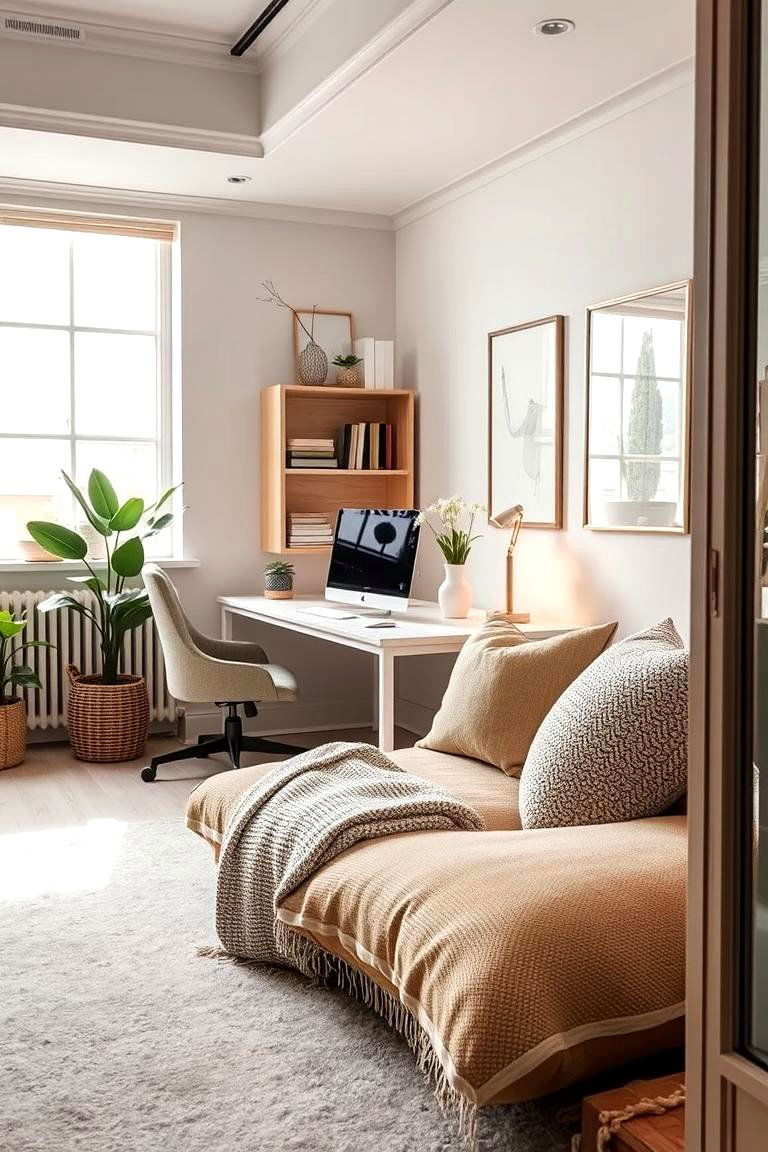
By choosing calming textures and fabrics, you add layers of comfort and warmth to your decor. Soft cushions, gentle drapery, and tactile wall hangings create an inviting space that feels both luxurious and relaxed. The interplay of different materials—from smooth velvets to natural cottons—can enhance sensory experiences and evoke a sense of familiarity. This attention to texture not only elevates the overall aesthetic but also provides a tactile comfort that supports emotional healing and creates a nurturing environment for every client.
11. Organized Bookshelves
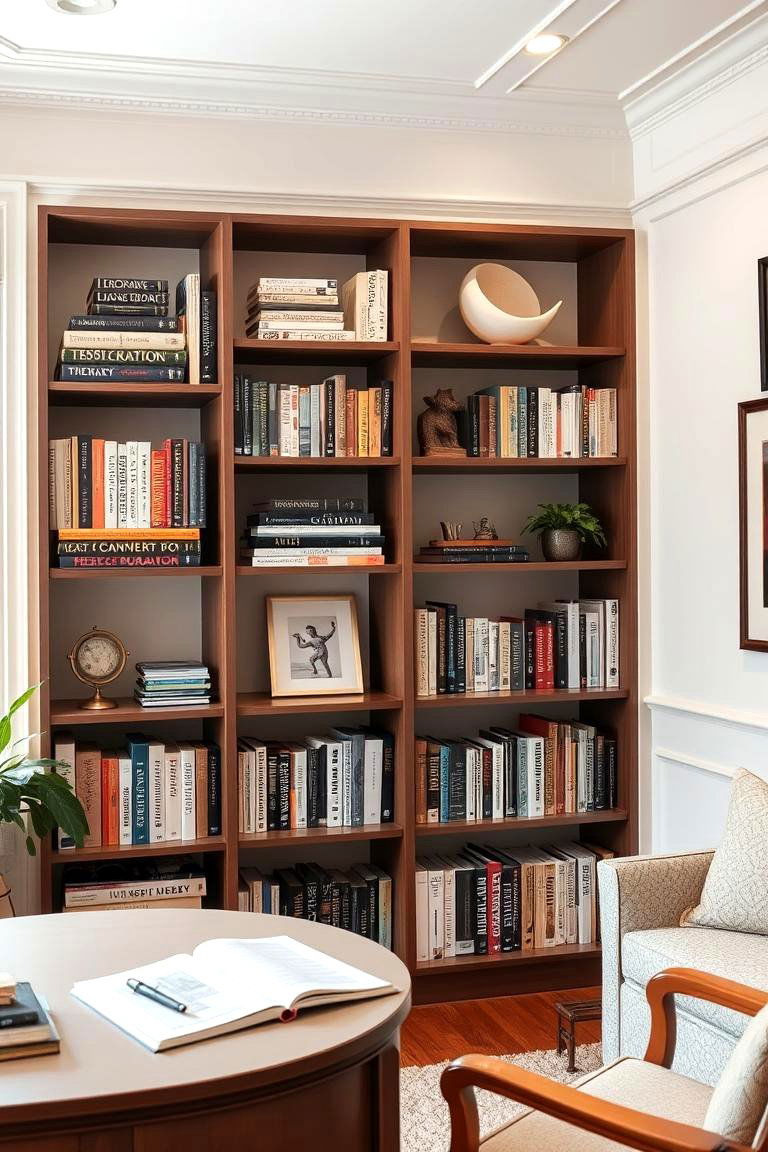
To maintain an organized environment, consider elegant bookshelves that display resources and decor items neatly. Well-arranged shelves can hold professional literature, artful objects, and inspirational mementos that enrich your therapy space. This organization not only contributes to a calm and orderly atmosphere but also reflects a commitment to continuous learning and growth. Thoughtful curation on display creates focal points that spark conversation and invite clients to explore new ideas while reinforcing the professionalism of your practice.
12. Functional Workspaces
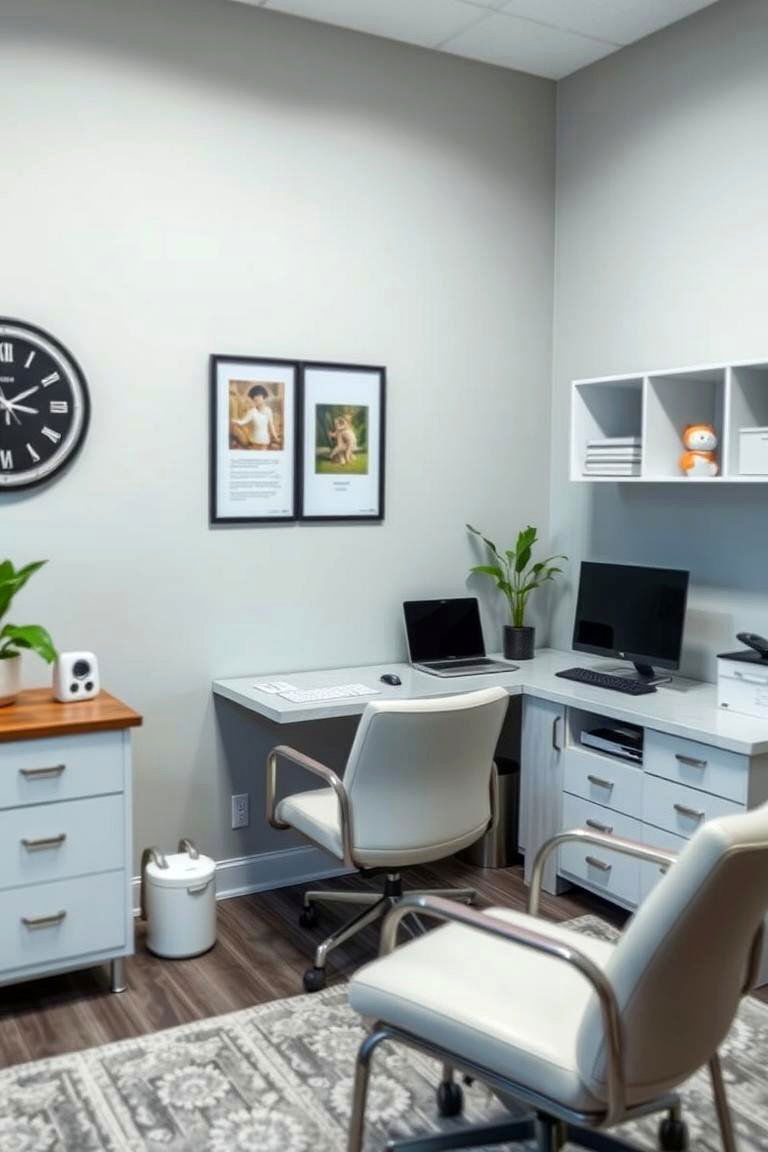
Take a functional workspace approach that balances creativity with efficiency. A designated area for administrative tasks, combined with an inviting session space, ensures that both work and therapy blend seamlessly. Organized desks, integrated technology, and ample storage solutions contribute to a clutter-free environment. This dual-purpose design enables a smooth transition between different functions while preserving the room’s overall serenity. A well-planned workspace underscores the importance of structure in fostering both professional productivity and a supportive therapeutic setting.
13. Warm Welcome Reception
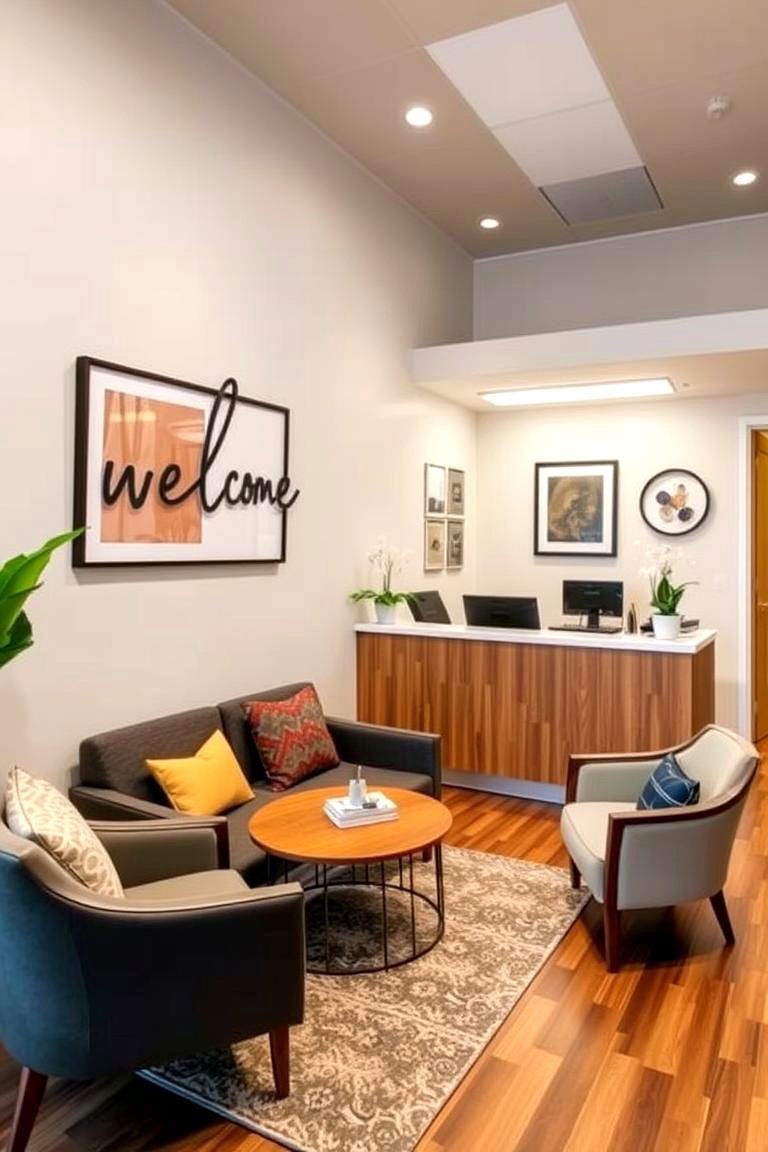
One inviting aspect is a warm welcome reception that immediately puts clients at ease. A thoughtfully designed reception area with comfortable seating, a friendly desk, and soft décor elements creates an atmosphere of genuine hospitality. This space sets the tone for the entire visit by exuding warmth and care from the moment clients walk in. A welcoming environment is essential to building trust and easing anxiety, ensuring that every interaction starts on a positive, encouraging note that supports the healing journey.
14. Private Consultation Areas
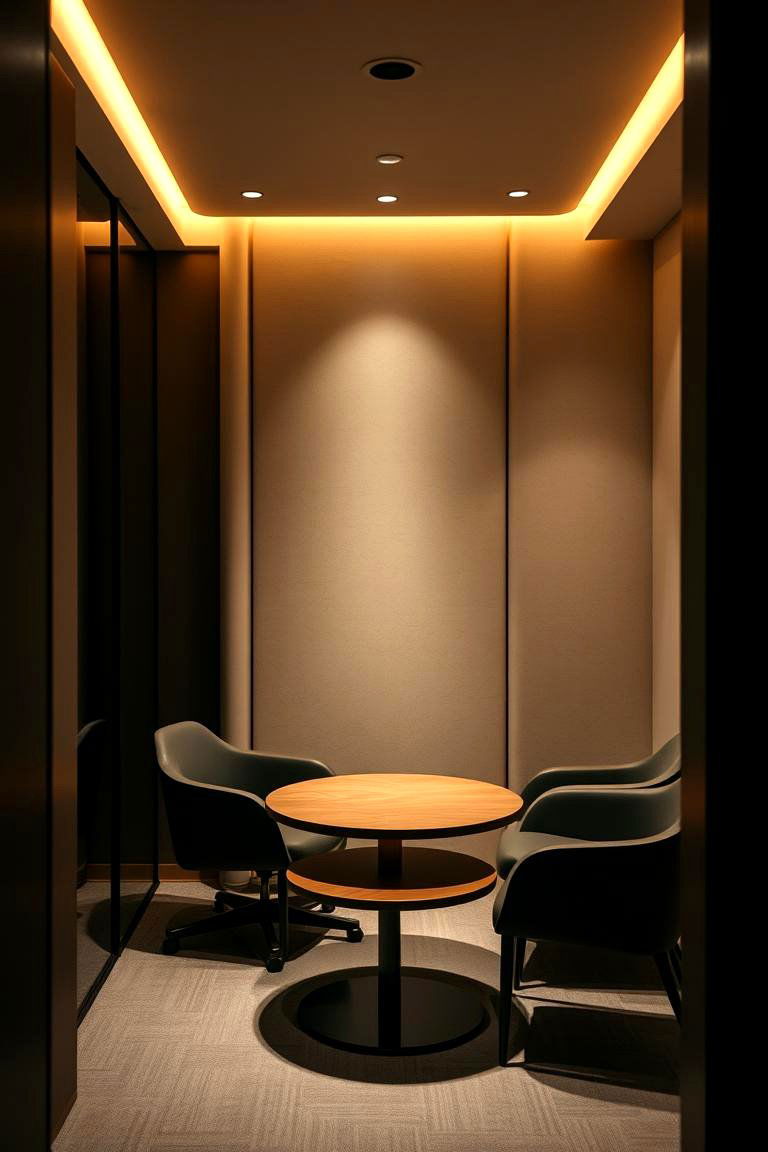
Finally, private consultation areas ensure that sessions are both confidential and comfortable. Dividers, subtle lighting, and a cozy arrangement of seating help create secluded spaces ideal for personal conversations. This design element emphasizes respect for client privacy and enhances the feeling of security during sensitive discussions. With a focus on intimacy and calm, private consultation zones allow both therapist and client to engage in deeper, uninterrupted dialogue, ultimately supporting a more effective therapeutic process.
15. Neutral and Muted Tones
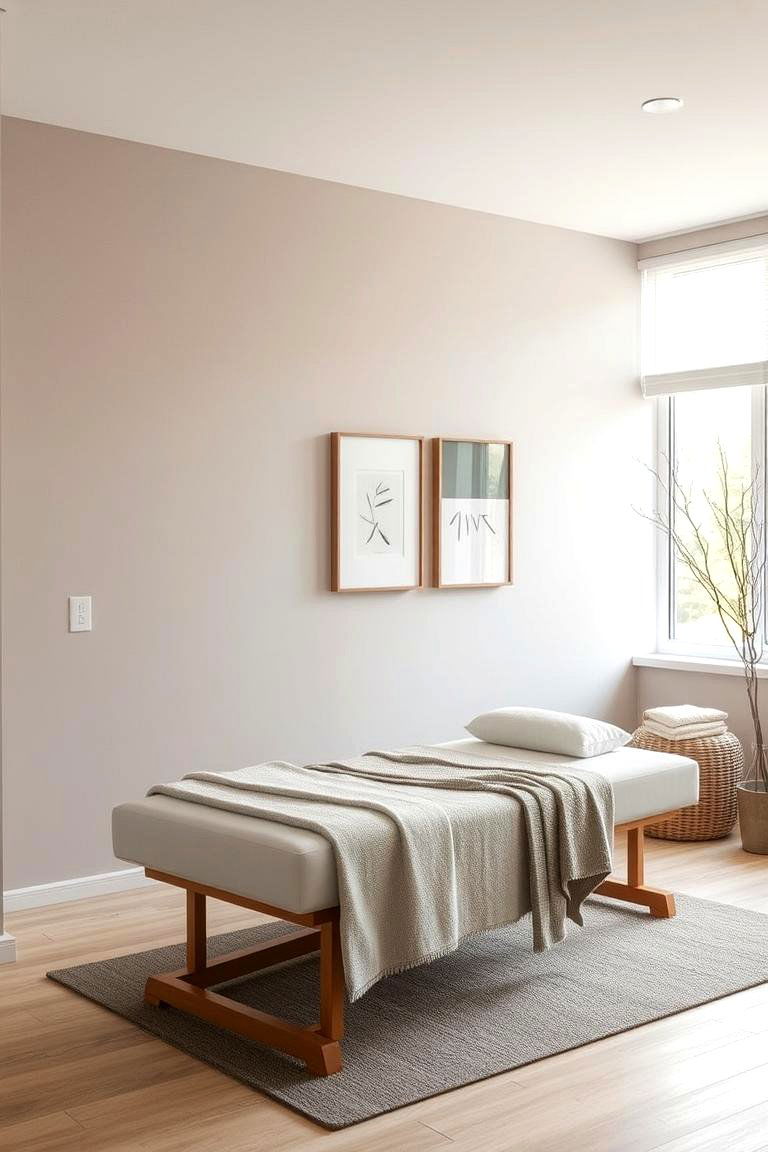
Despite bold trends, neutral and muted tones offer a timeless backdrop that enhances focus and calm. Soft greys, beiges, and off-whites blend seamlessly to create an understated yet sophisticated ambiance. These colors serve as a subtle canvas that allows other decor elements to shine without overwhelming the senses. The quiet elegance of neutral tones promotes a balanced environment where stress is minimized, making them an ideal choice for a therapeutic setting that values both simplicity and serenity.
16. Creative Wall Murals
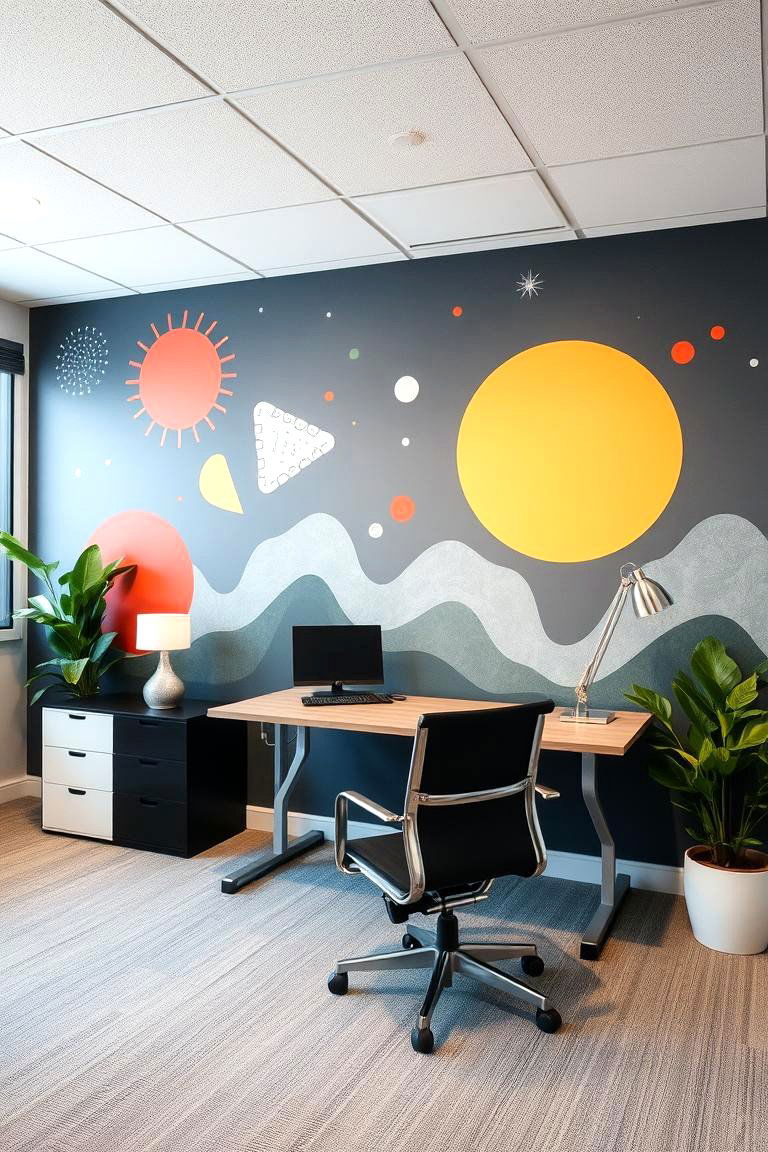
Surprisingly, creative wall murals can energize your therapy office while delivering a subtle narrative of growth. Hand-painted designs or tastefully applied decals can become a focal point, drawing the eye and inspiring thoughtful reflection. These artistic expressions add character and personality, transforming plain walls into dynamic canvases. A well-executed mural not only enlivens the space but also contributes to a unique, engaging environment that encourages clients to explore new perspectives during their sessions.
17. Inspirational Quote Displays
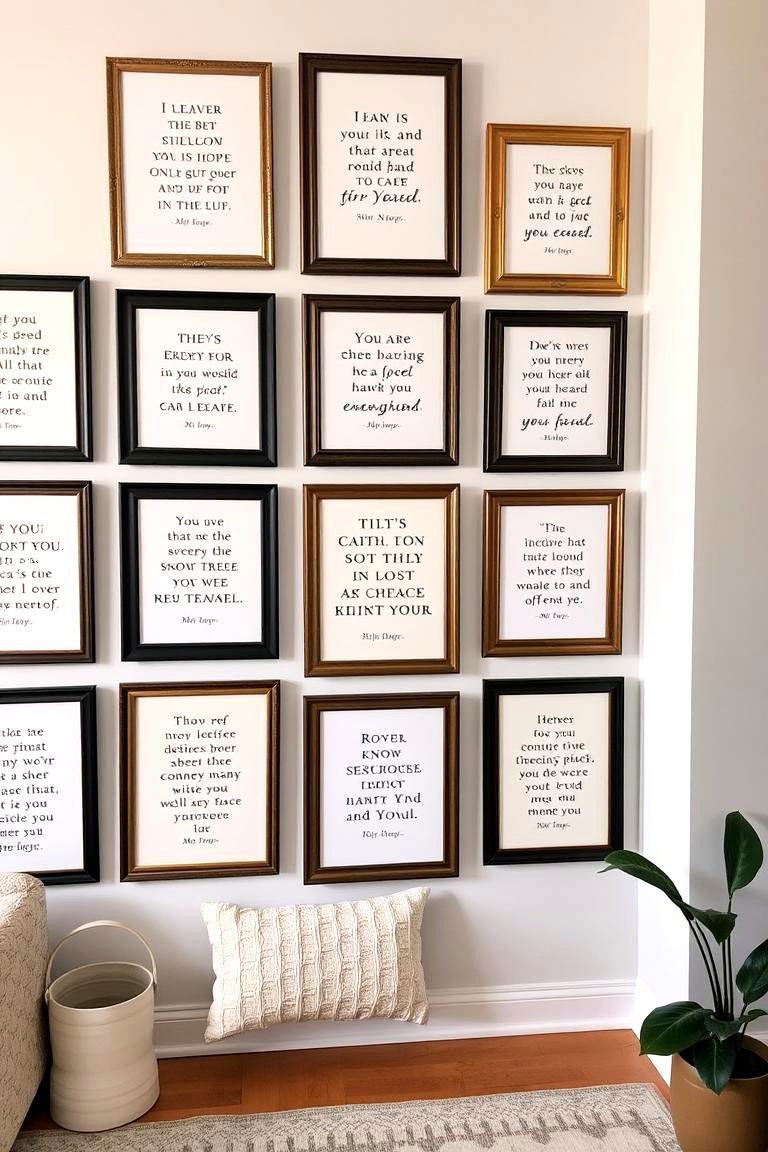
Additionally, inspirational quote displays serve as daily reminders of resilience and hope. Carefully framed messages or artistically rendered calligraphy can provide encouragement and spark positive thinking. These thoughtful additions create moments of reflection, reminding clients and therapists alike of the strength found in words. Positioned strategically around the office, these quotes help cultivate an atmosphere of support and motivation, enhancing the overall sense of care and empathy in the space.
18. Smart Technology Integration
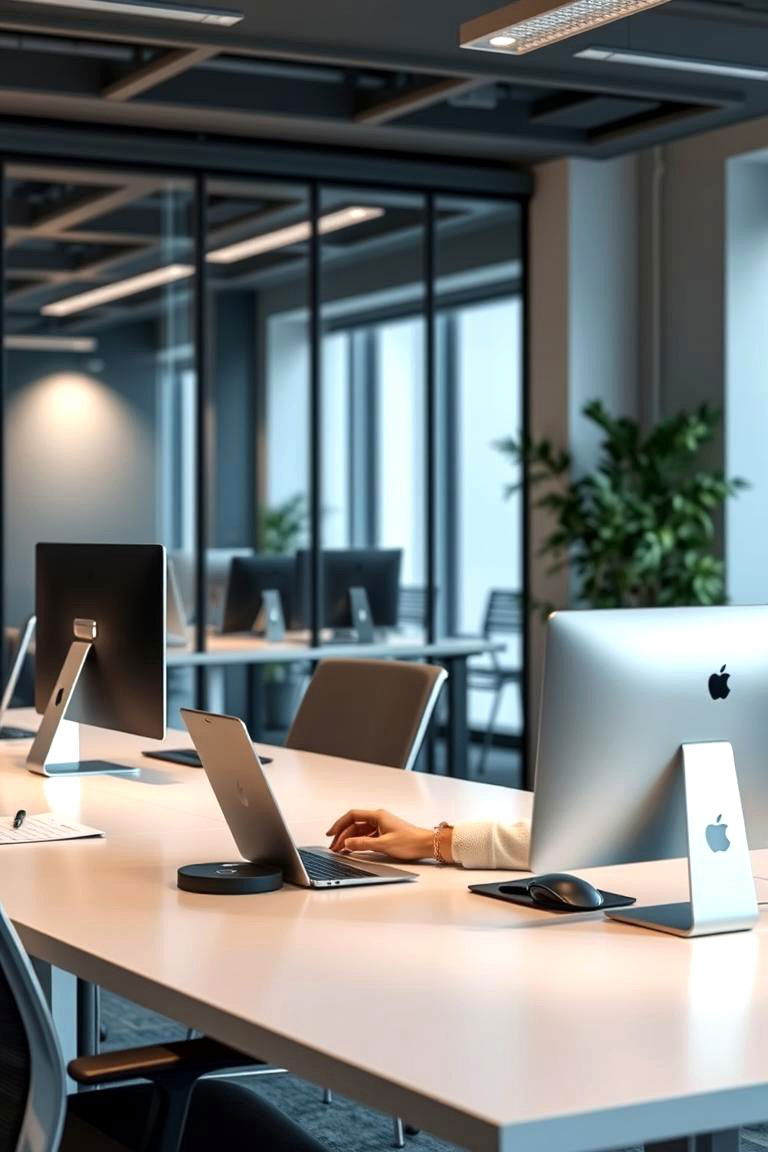
Moreover, smart technology integration enhances the functionality of your office without disrupting its calming vibe. Discreet wireless devices, digital scheduling tools, and modern communication systems streamline daily operations while maintaining a clean aesthetic. This seamless blend of technology with decor ensures that modern conveniences are available to support both administrative needs and therapeutic interactions. The careful incorporation of tech solutions not only improves efficiency but also upholds the tranquil atmosphere essential for meaningful client sessions.
19. Comfortable Flooring Choices
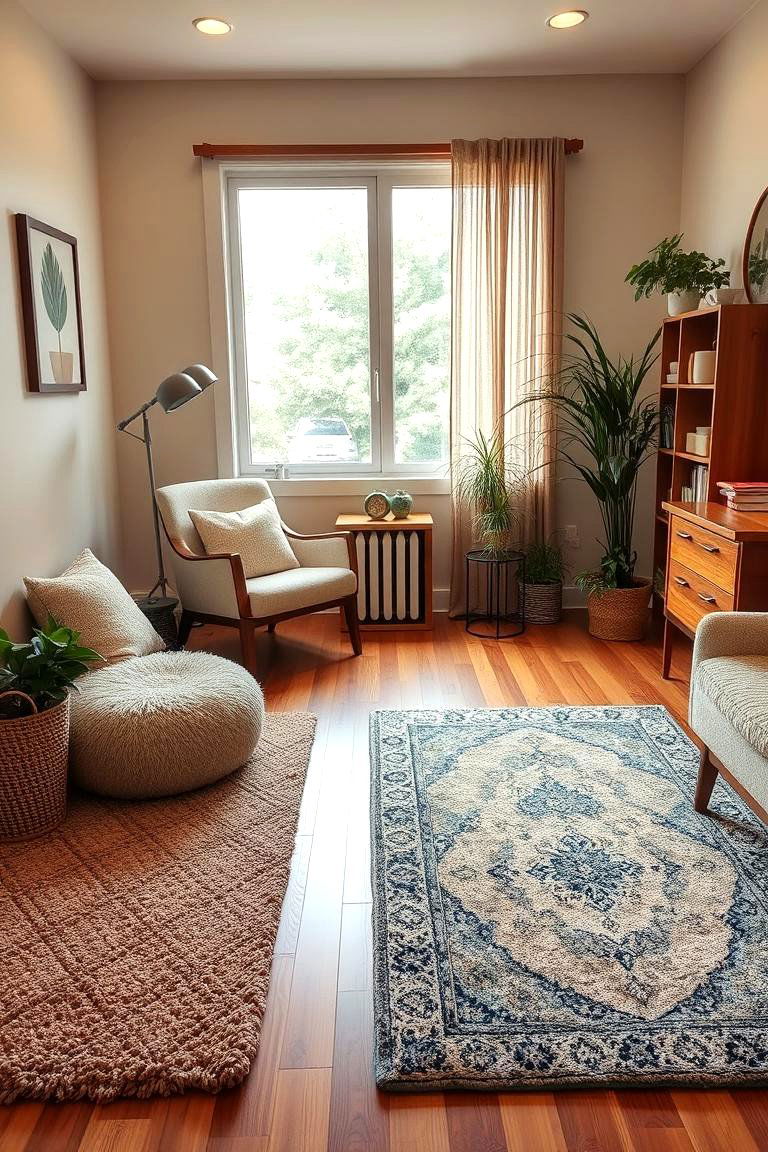
At the heart of comfort, flooring choices can significantly influence the ambiance of your office. Opt for soft, durable materials like plush area rugs or polished wooden floors that offer warmth and elegance. These flooring options create a welcoming foundation underfoot, contributing to a cozy, grounded environment. Thoughtful flooring not only enhances the overall design but also provides a tactile sense of stability and calm, making every step within the space feel secure and inviting.
20. Personalized Decor Accents
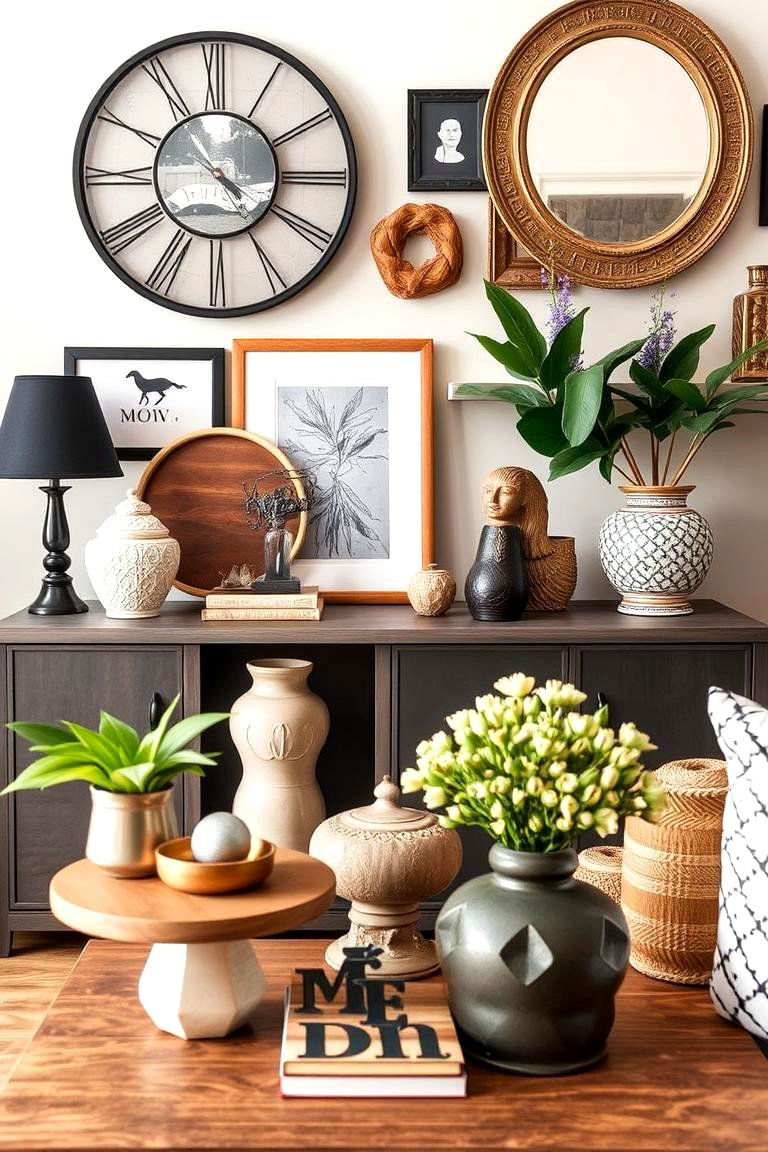
These personalized decor accents, whether subtle art pieces or unique trinkets, reflect the individuality of your practice. Incorporating meaningful objects and carefully curated items adds character and a personal touch to your office. Such accents create conversational points and reinforce a sense of identity, making the space truly your own. This approach helps clients feel more connected, as the environment speaks to authenticity and thoughtful care. Personalized decor accents thus serve as visual testimonials to your commitment to a supportive, nurturing atmosphere.
21. Serene Zen Corners
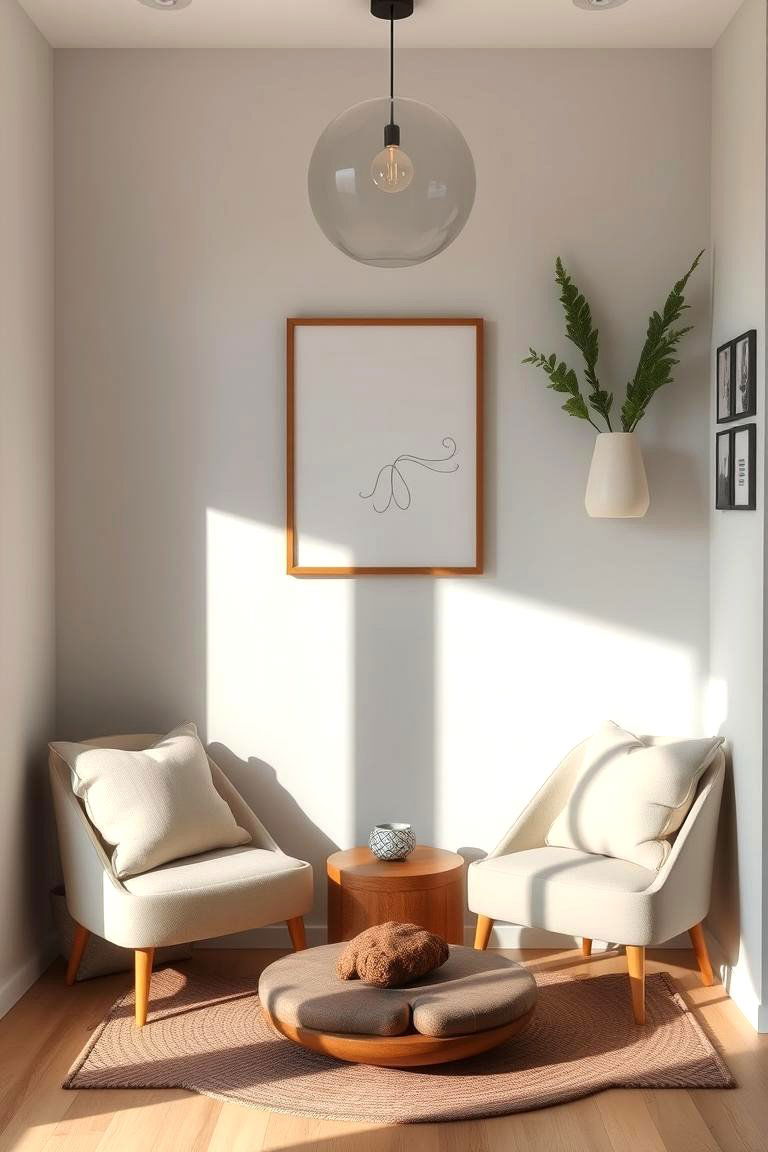
Under soft, natural light, serene Zen corners offer a quiet retreat within your office. A small, dedicated space featuring minimalist decor, a comfortable seating arrangement, and gentle natural elements invites clients to pause and reflect. These calming corners provide an oasis of stillness amid daily activities, promoting mindfulness and inner peace. By creating a designated area for meditation or quiet thought, you foster an environment where both clients and therapists can recharge and maintain a balanced perspective.
22. Multifunctional Decor Pieces
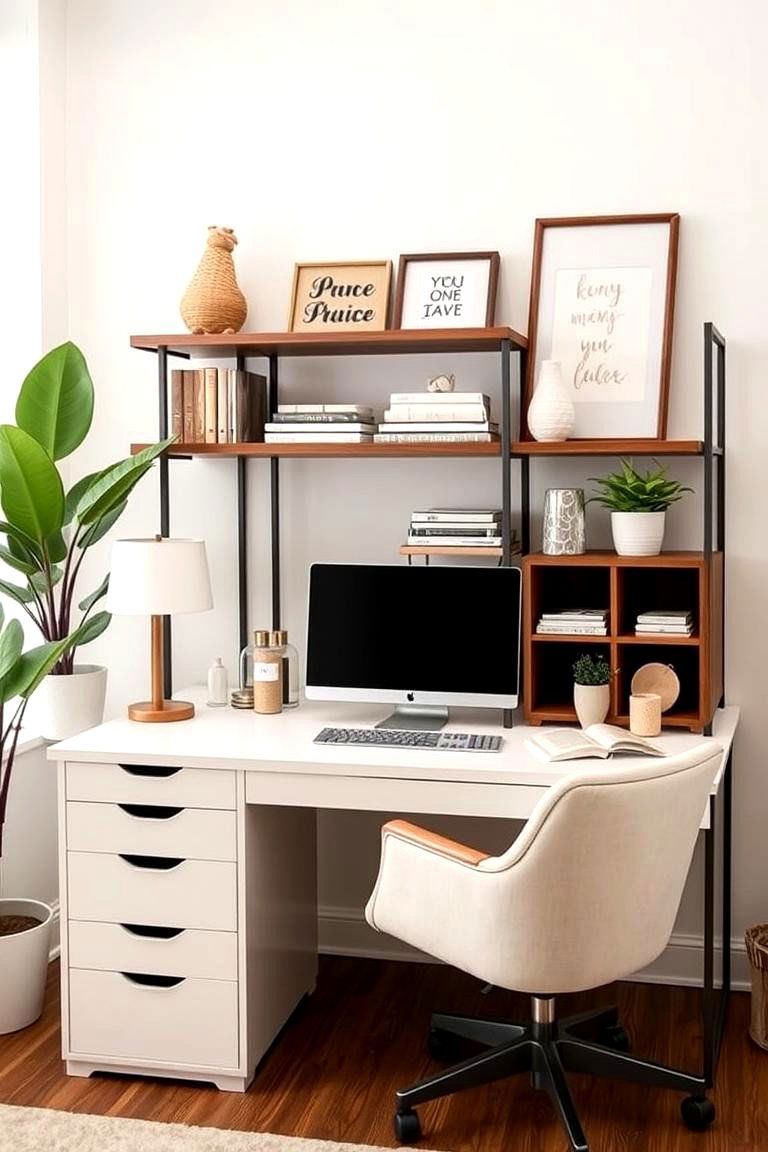
While multifunctional decor pieces add style, they also serve practical roles in organization and display. Dual-purpose items, such as storage benches or convertible tables, combine aesthetic appeal with everyday functionality. This clever integration of form and function helps reduce clutter while enhancing the visual interest of the space. Multifunctional decor not only maximizes limited areas but also reinforces a flexible, adaptive environment that meets both professional needs and the desire for an inviting, cohesive design.
23. Ambient Soundscapes and Music
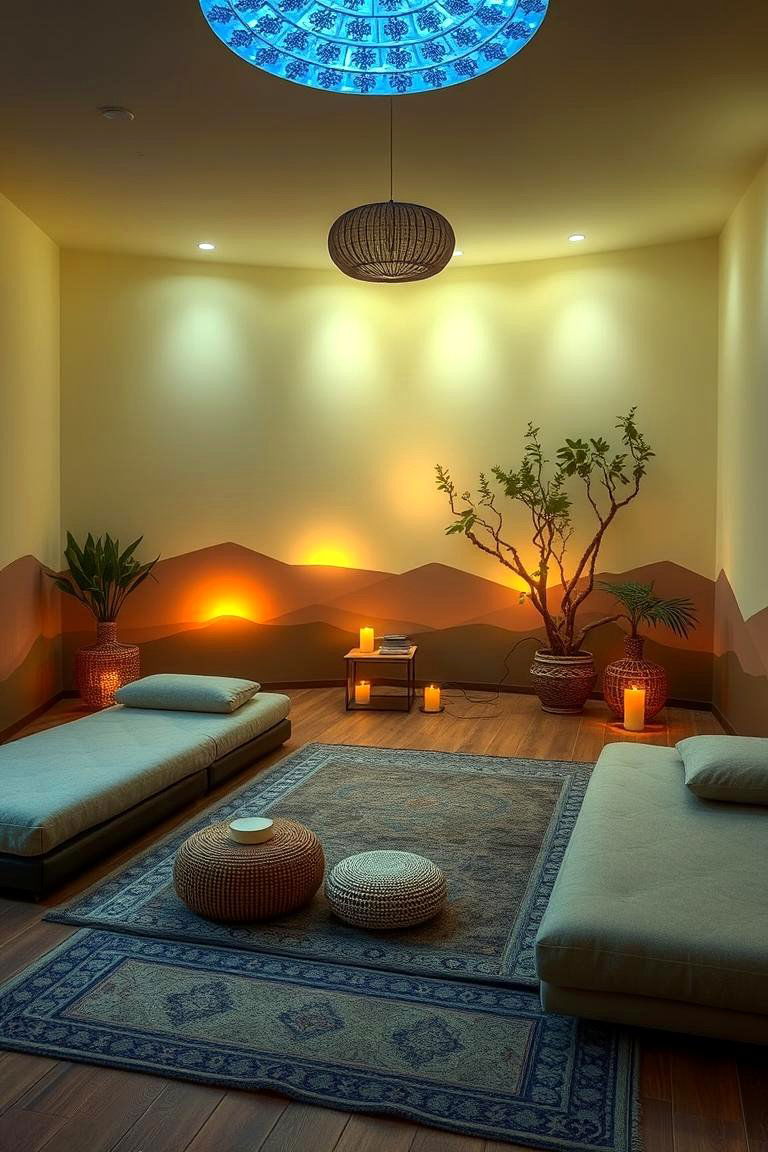
In ambient soundscapes and music, a therapy office finds a rhythmic balance that soothes the mind. Soft instrumental tunes or nature-inspired sounds play subtly in the background, enhancing the overall sense of calm. This auditory dimension complements the visual decor and contributes to a multisensory environment that supports emotional healing. The careful selection of sound elements helps mask distracting noises, ensuring that each session flows smoothly and that every client experiences a consistent, peaceful atmosphere.
24. Harmonious Color Coordination
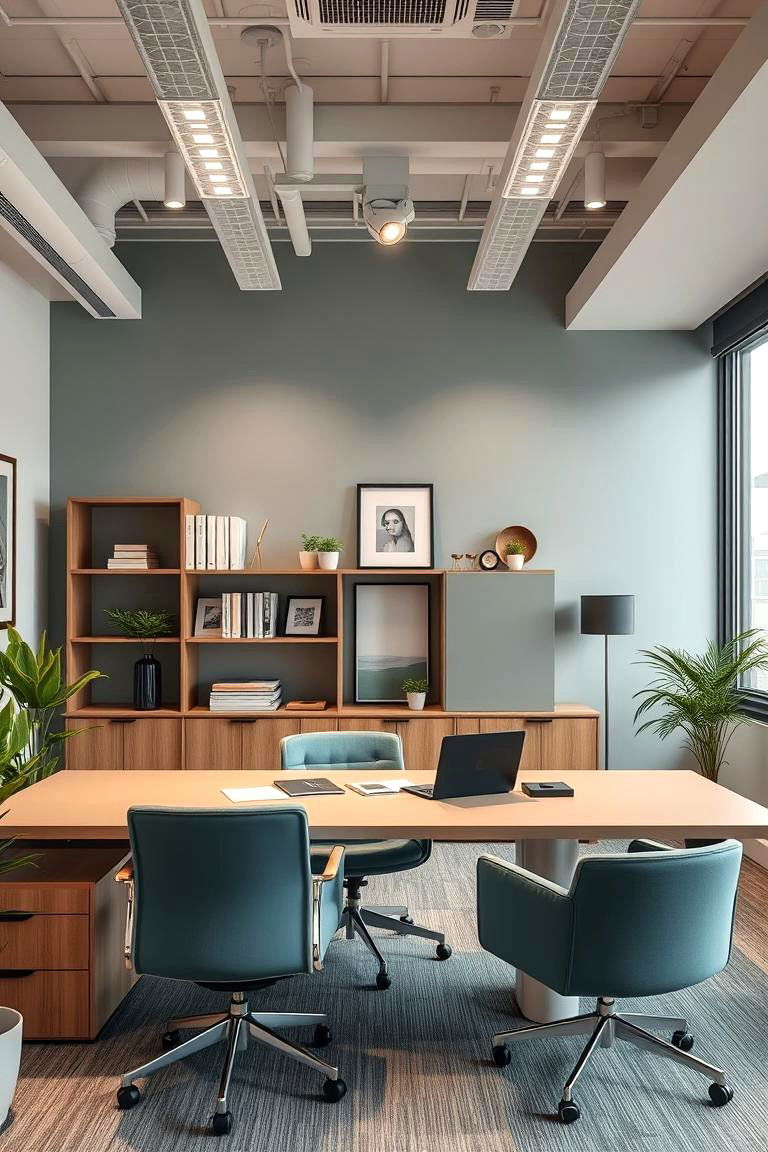
Taking everything into account, harmonious color coordination unifies the office decor seamlessly. Complementary hues and subtle contrasts work together to create a cohesive visual narrative that is both balanced and inviting. This deliberate attention to color ties all design elements together, reinforcing a sense of order and calm. By focusing on harmonious coordination, you craft an environment where every detail contributes to an overall feeling of well-being, making the space both aesthetically pleasing and functionally supportive for therapy sessions.
Conclusion:
A thoughtfully designed therapy office embodies both functionality and serenity, ensuring every detail contributes to a welcoming atmosphere. The ideas presented—from calming colors and ergonomic furniture to nature-inspired accents and smart technology—offer practical ways to enhance your workspace. Each element supports the therapeutic process by fostering comfort, privacy, and inspiration. Embrace these insights as you explore the 24 Therapist Office Decor Ideas and transform your office into a haven of healing and hope.


